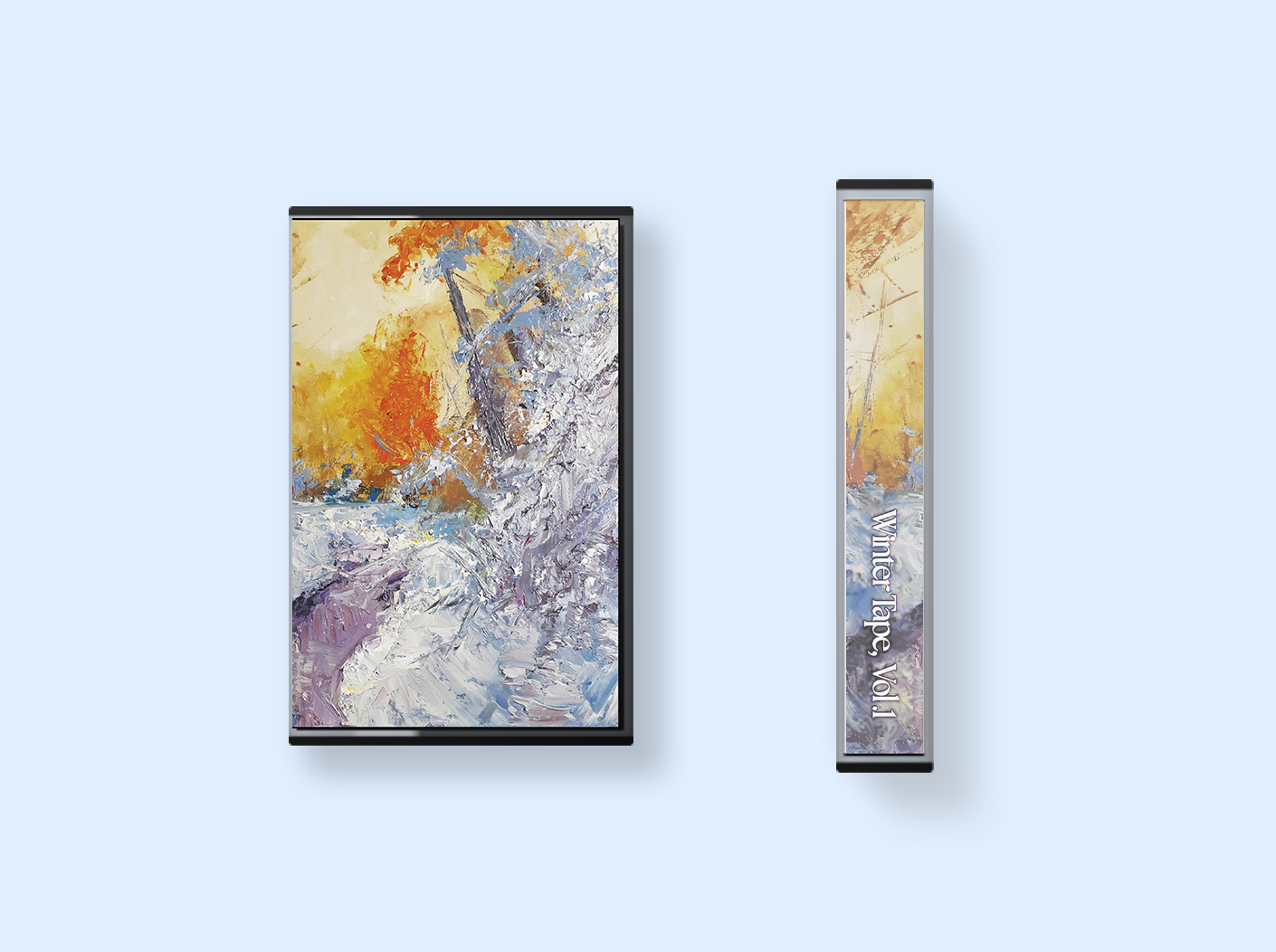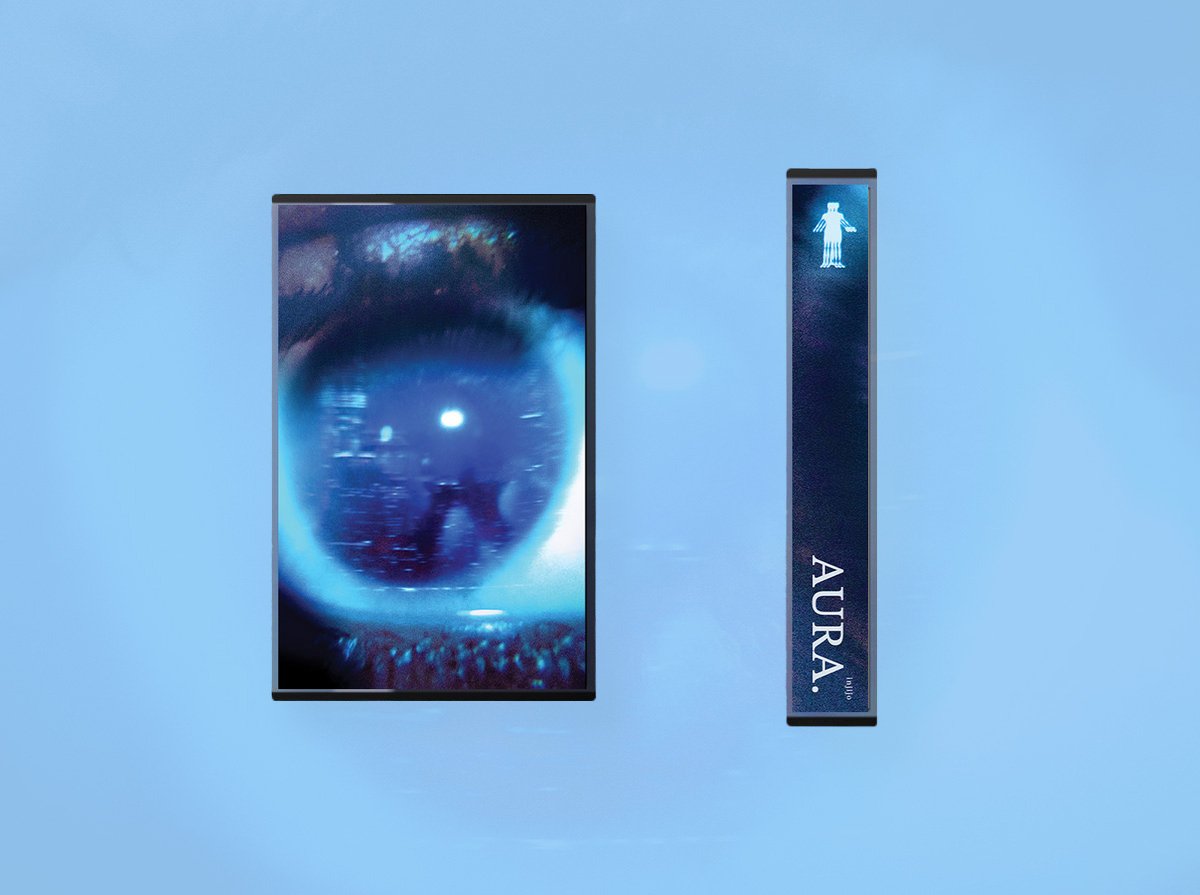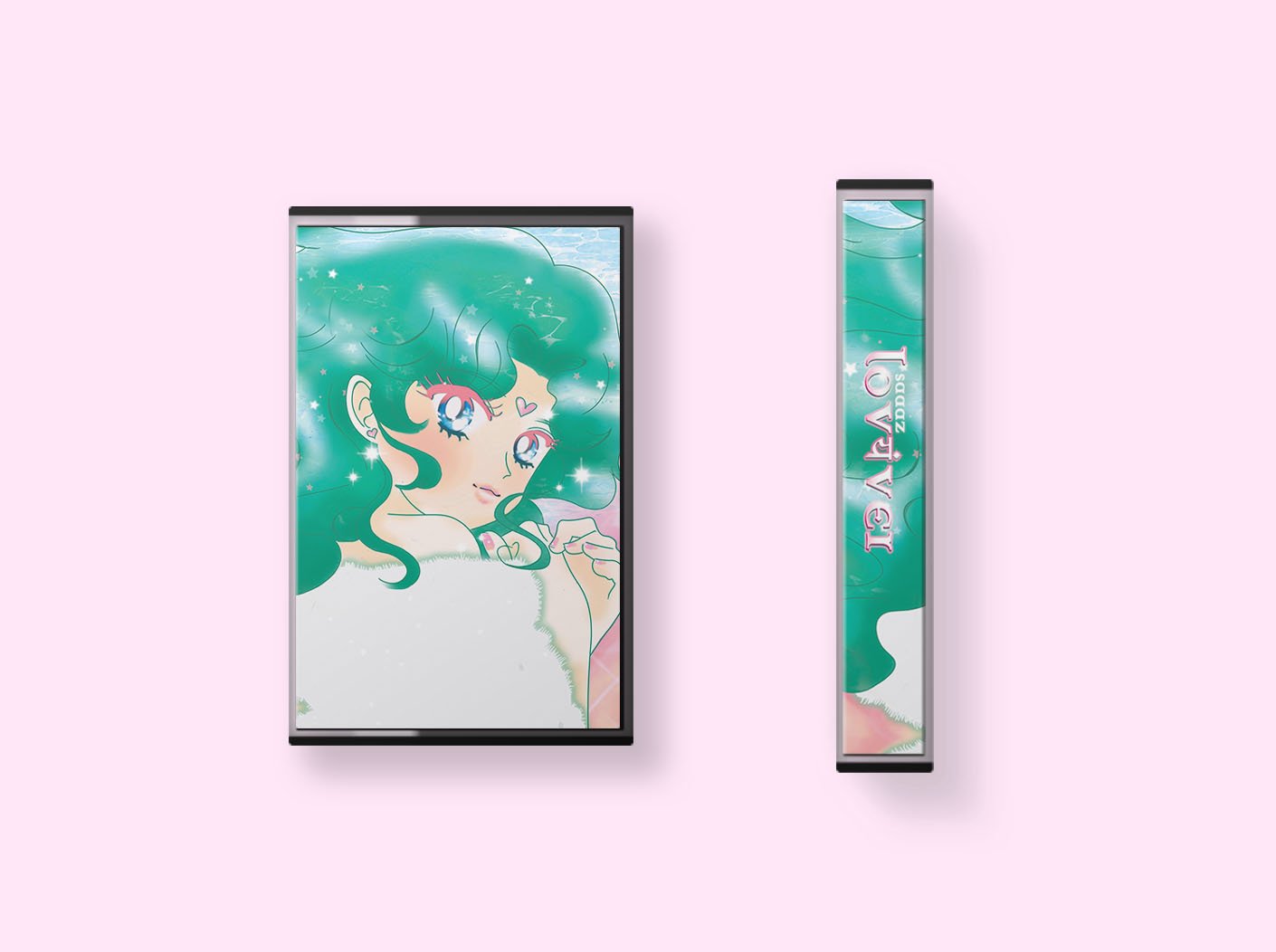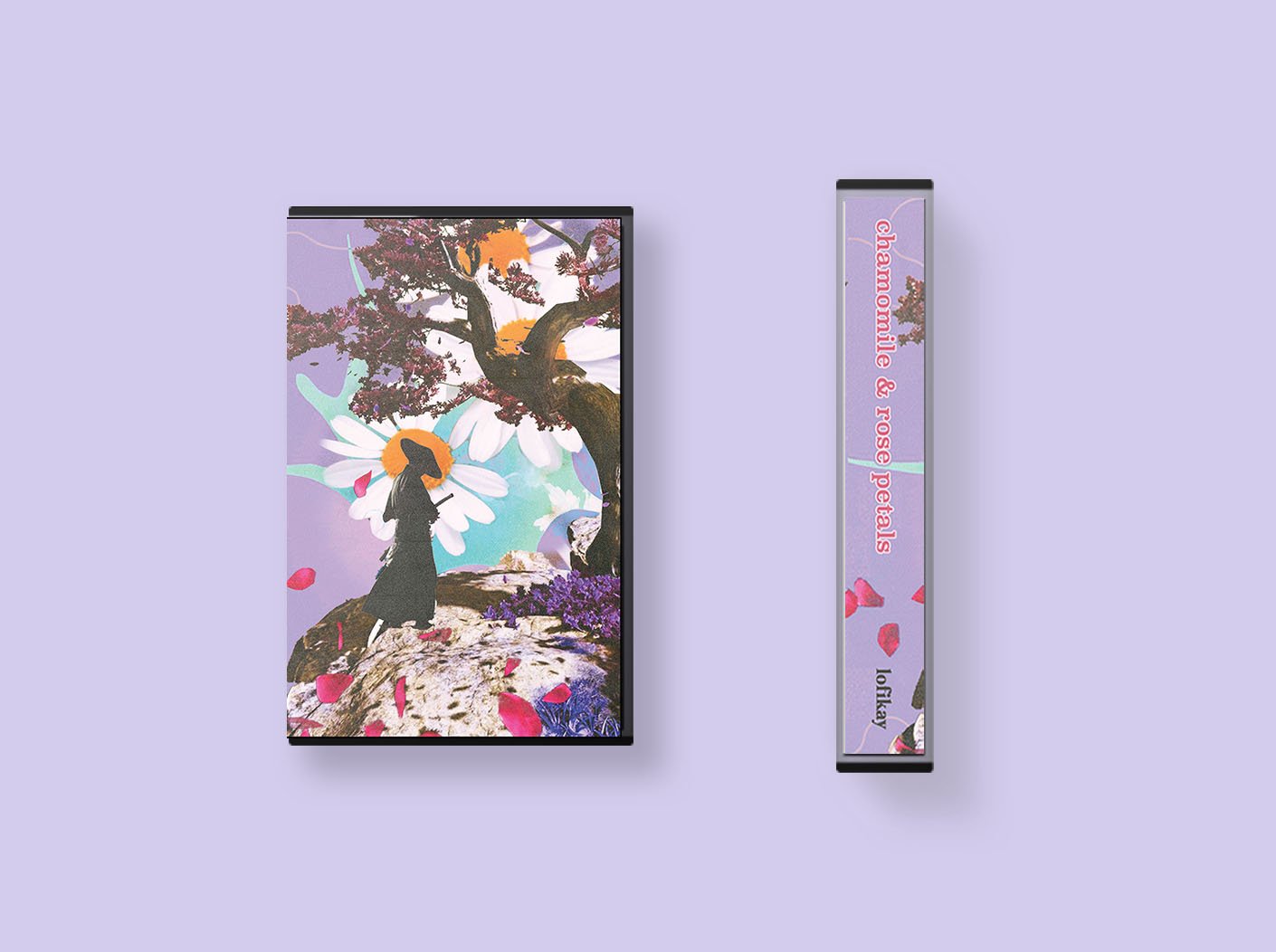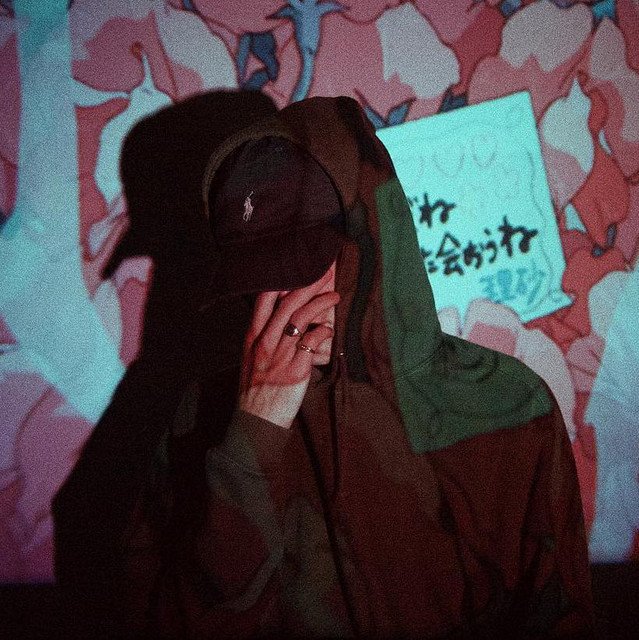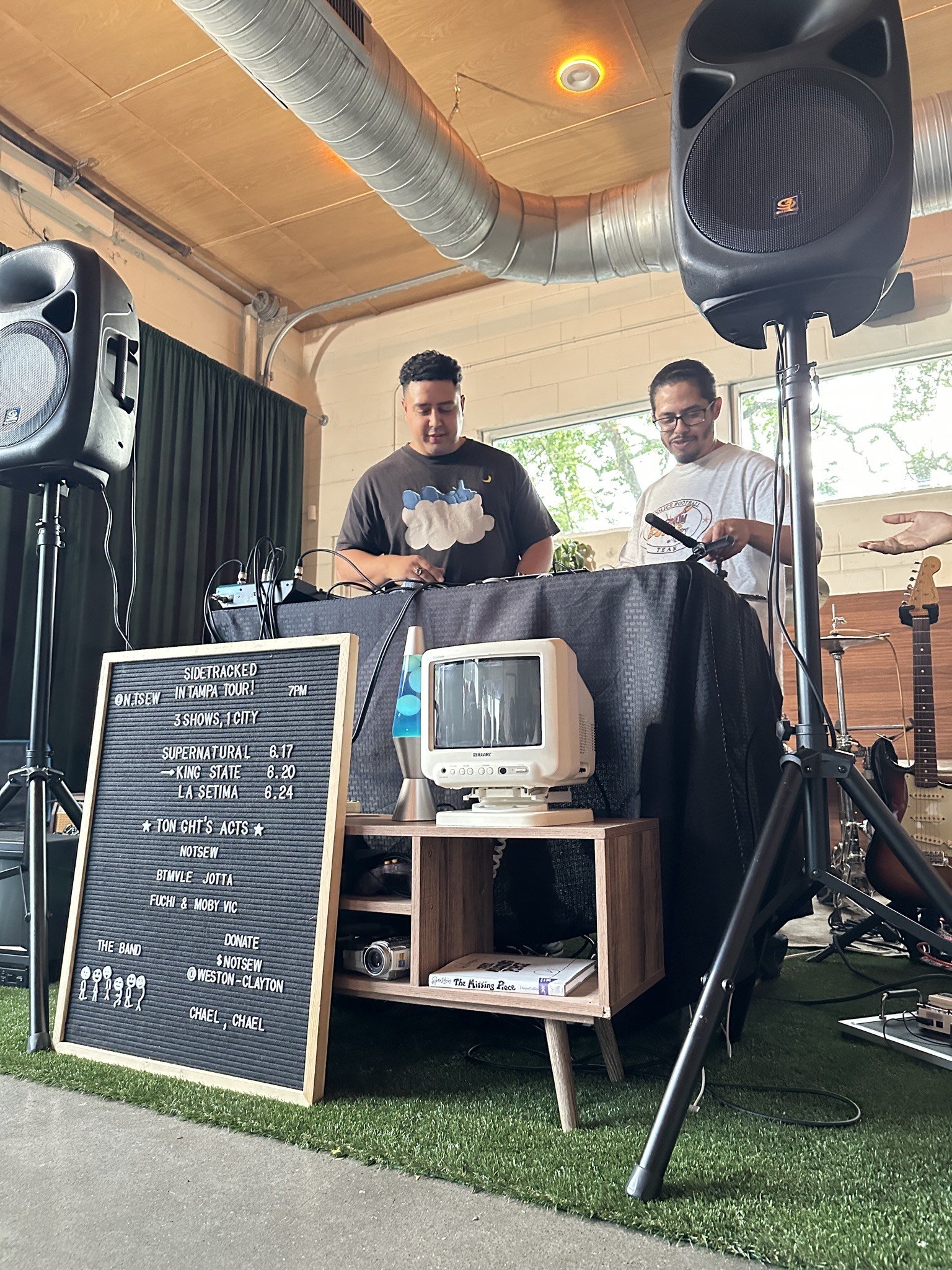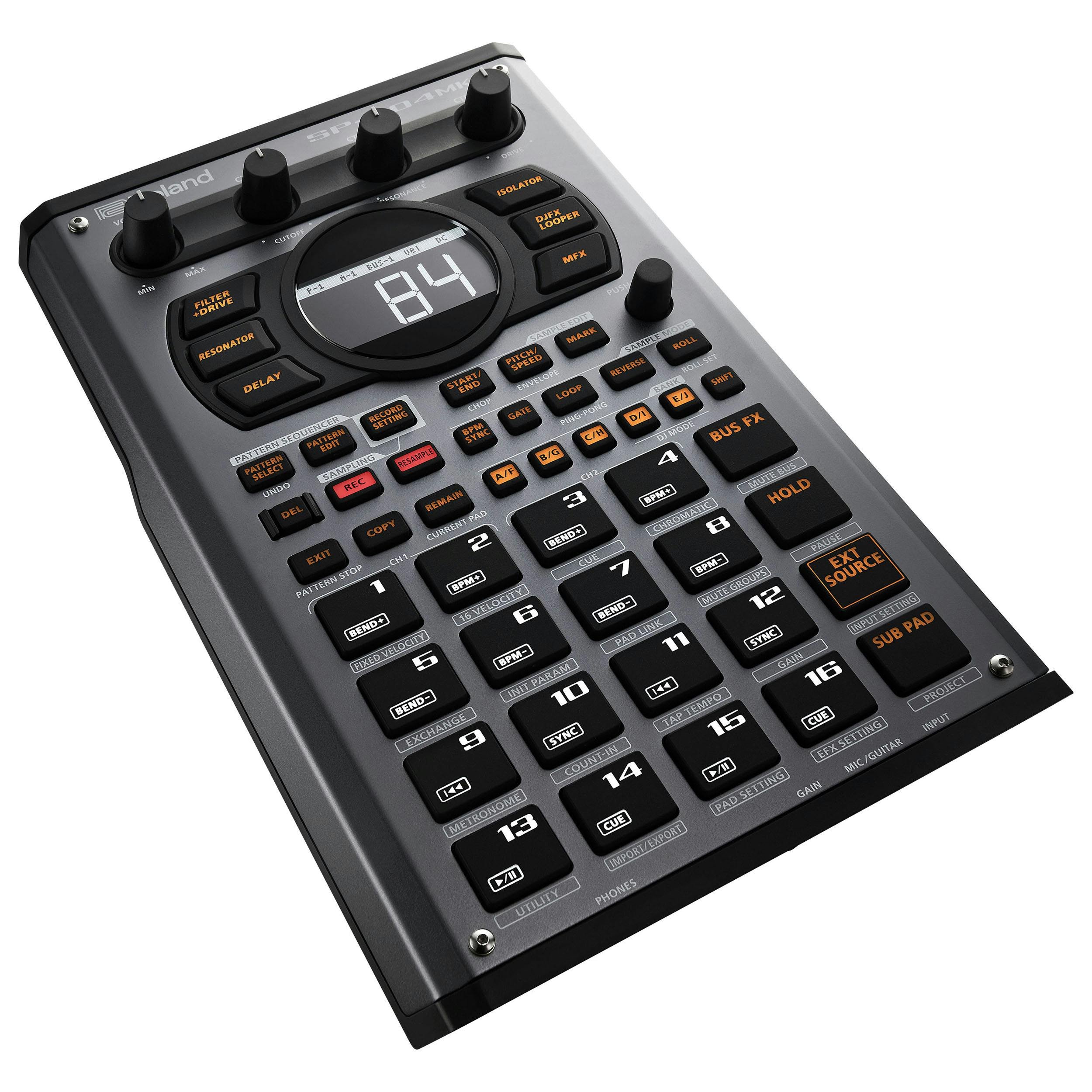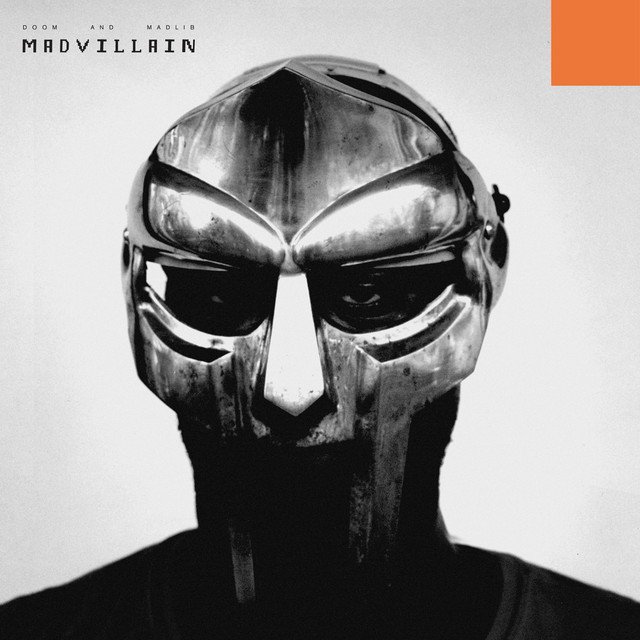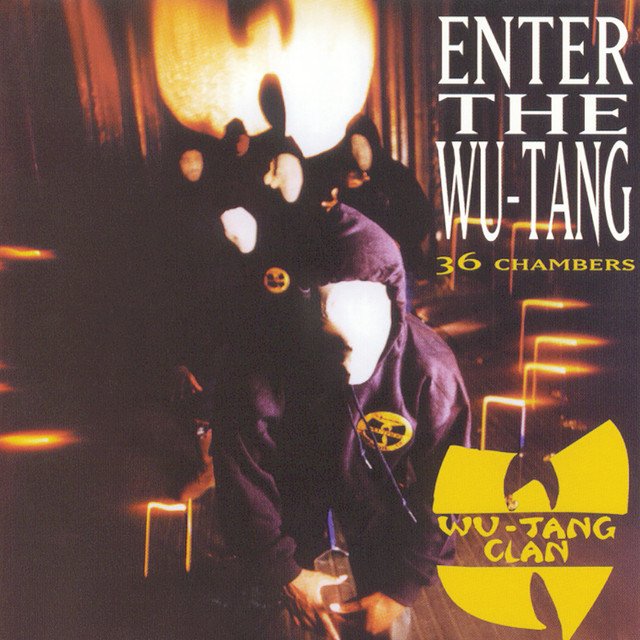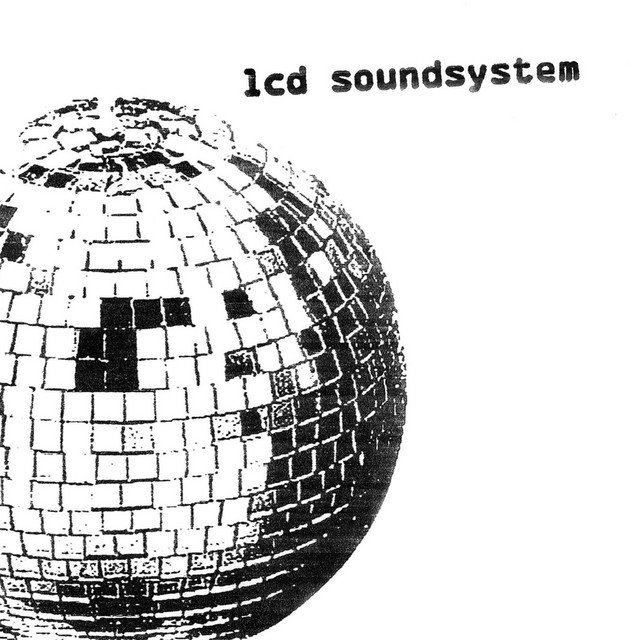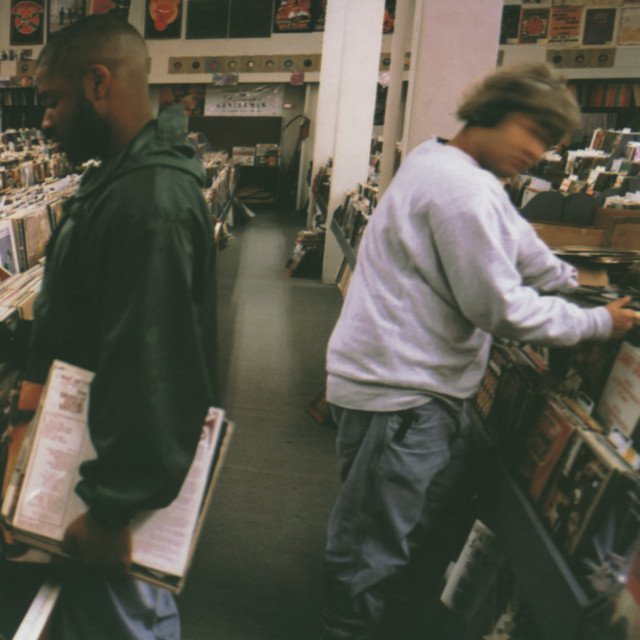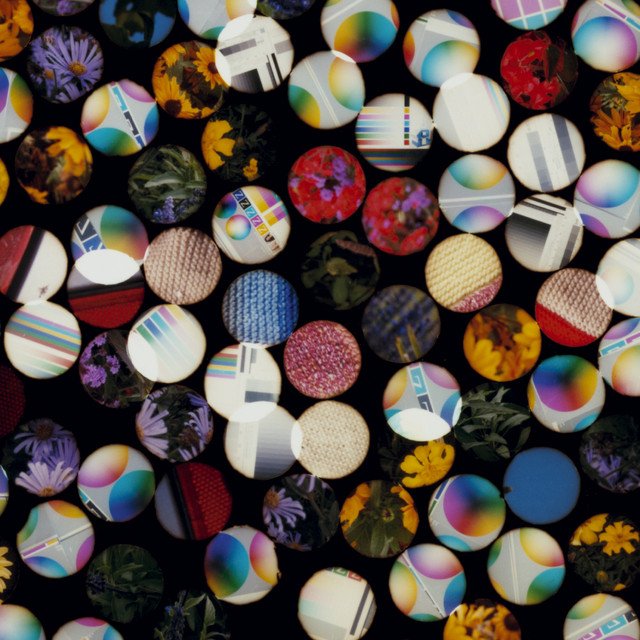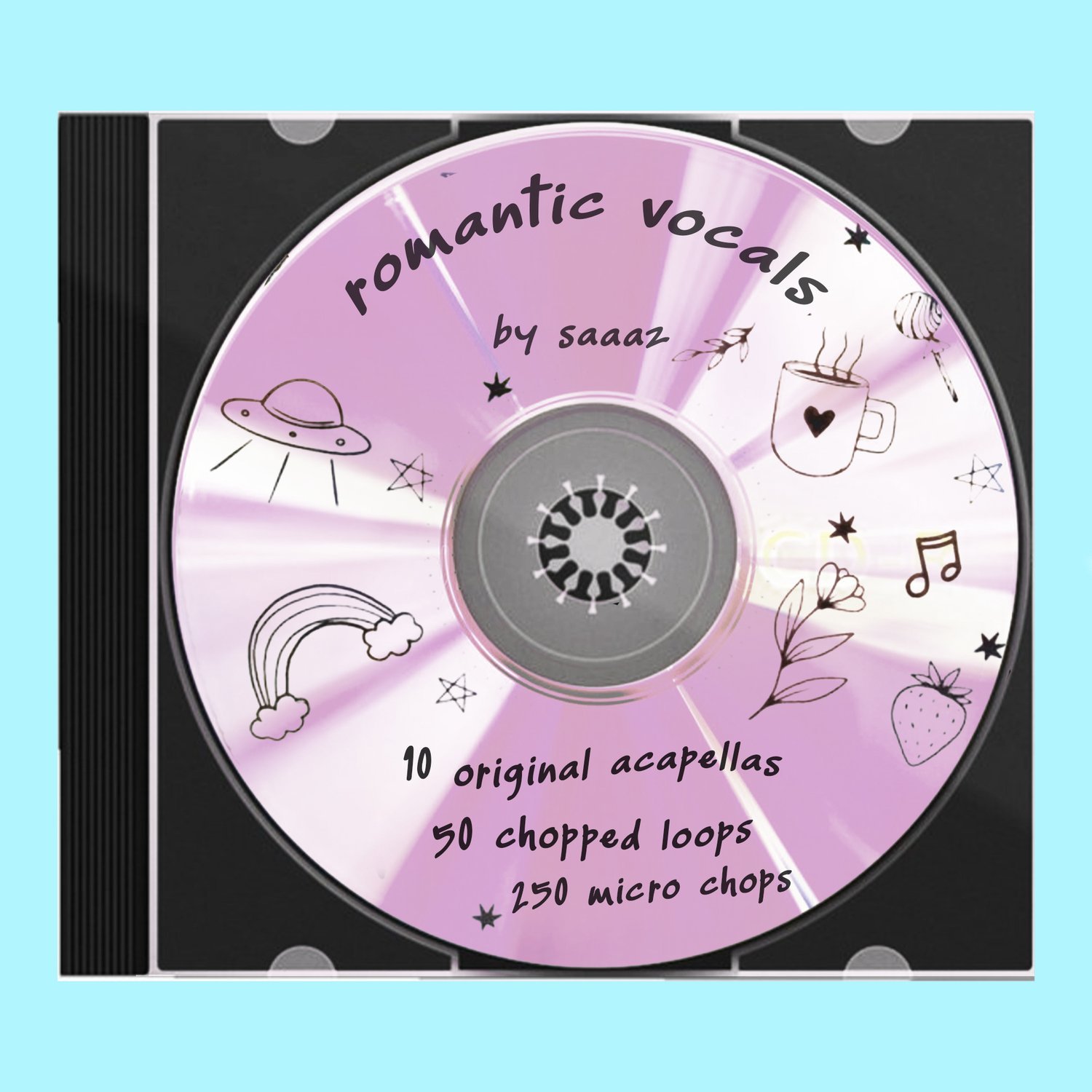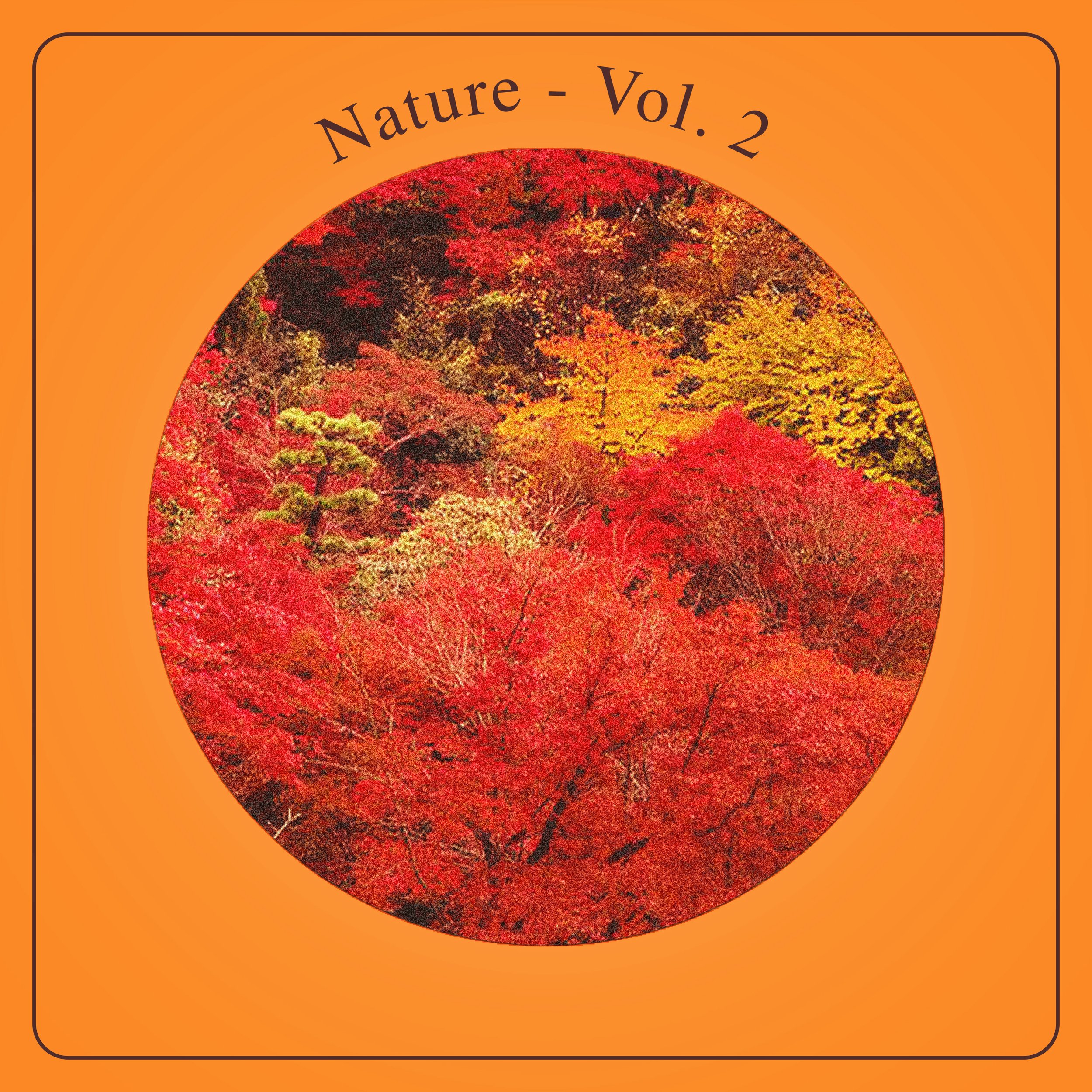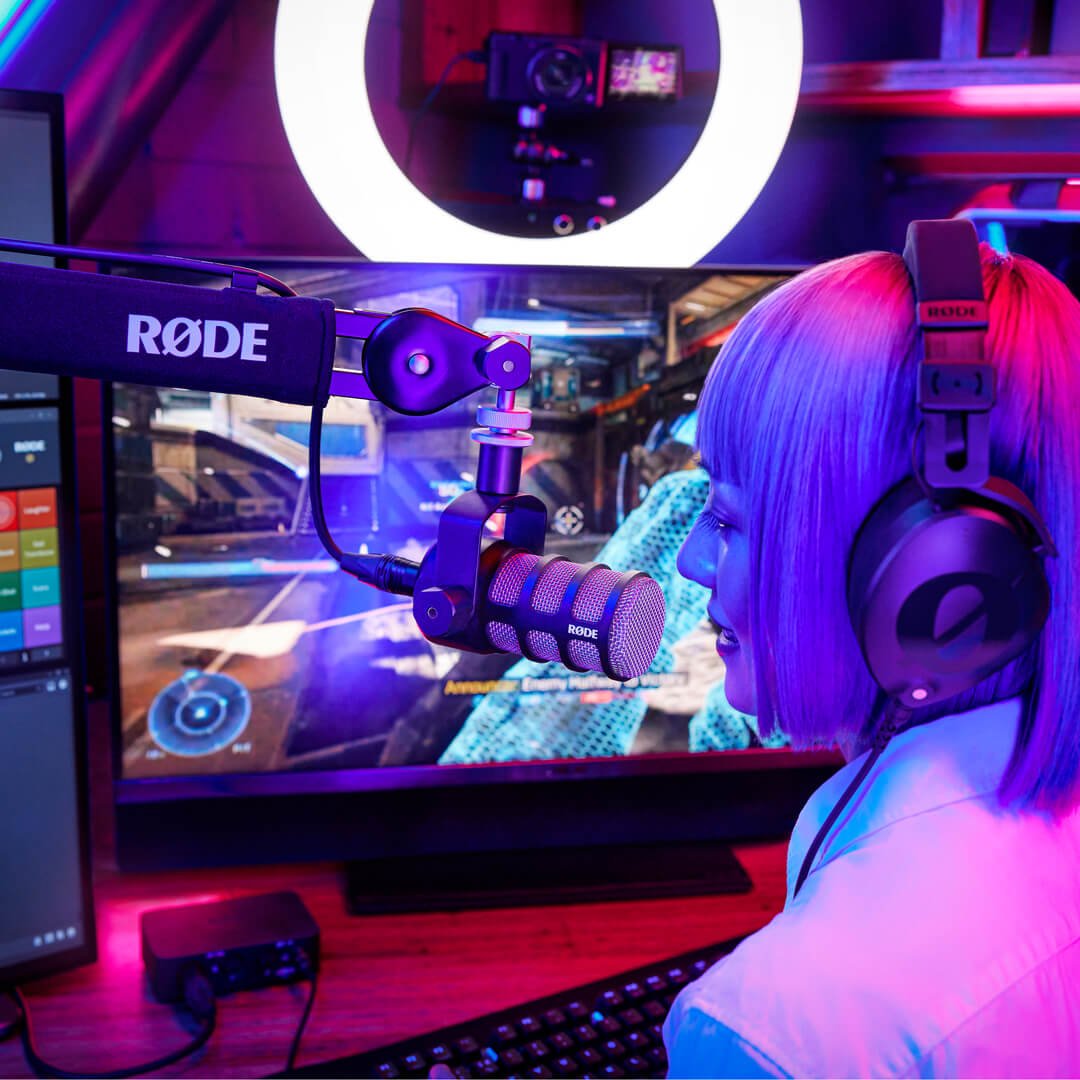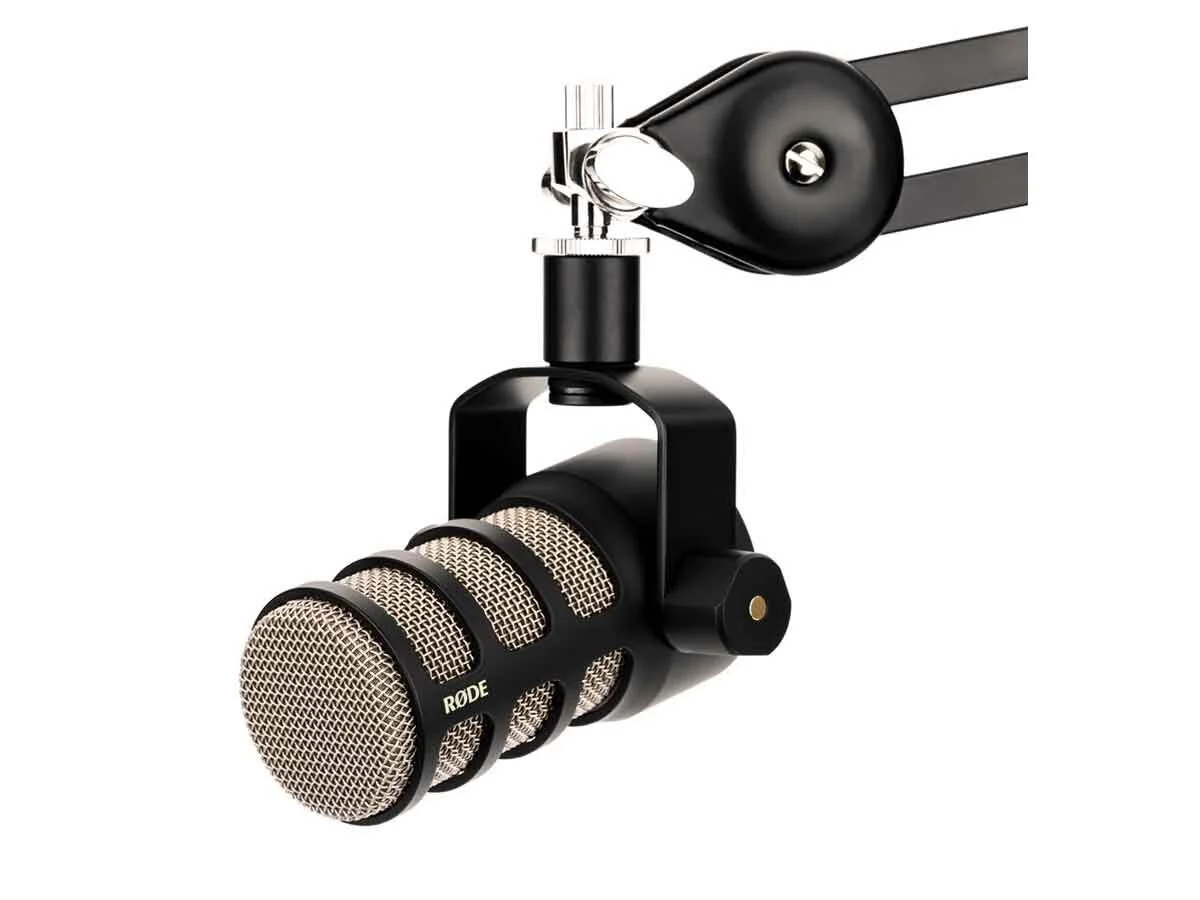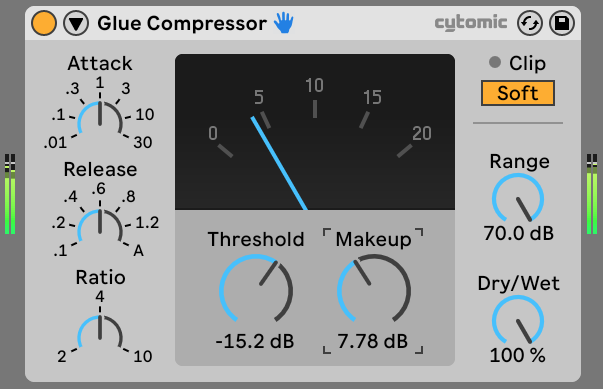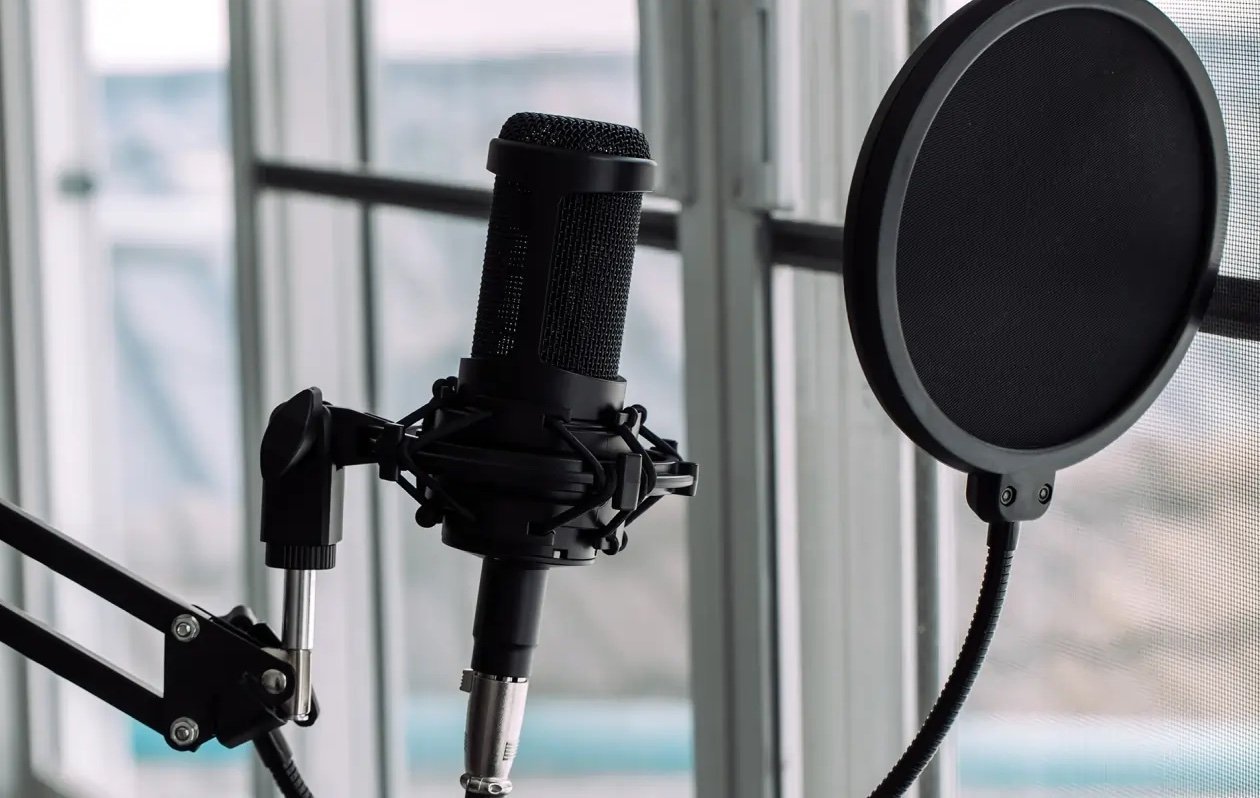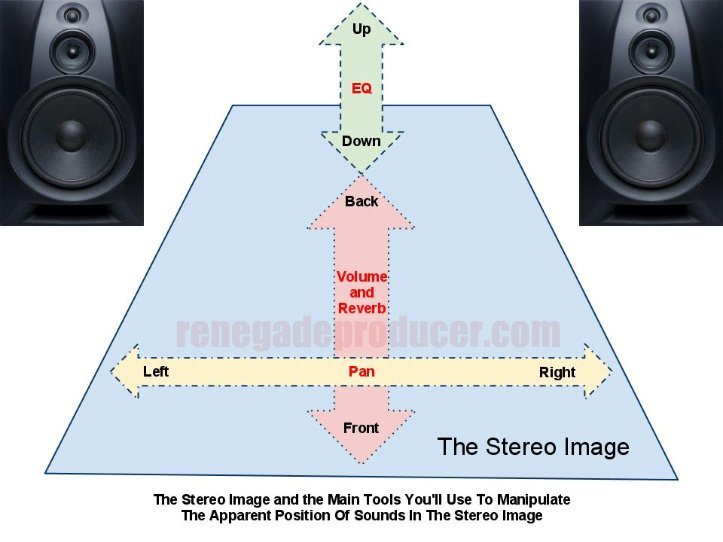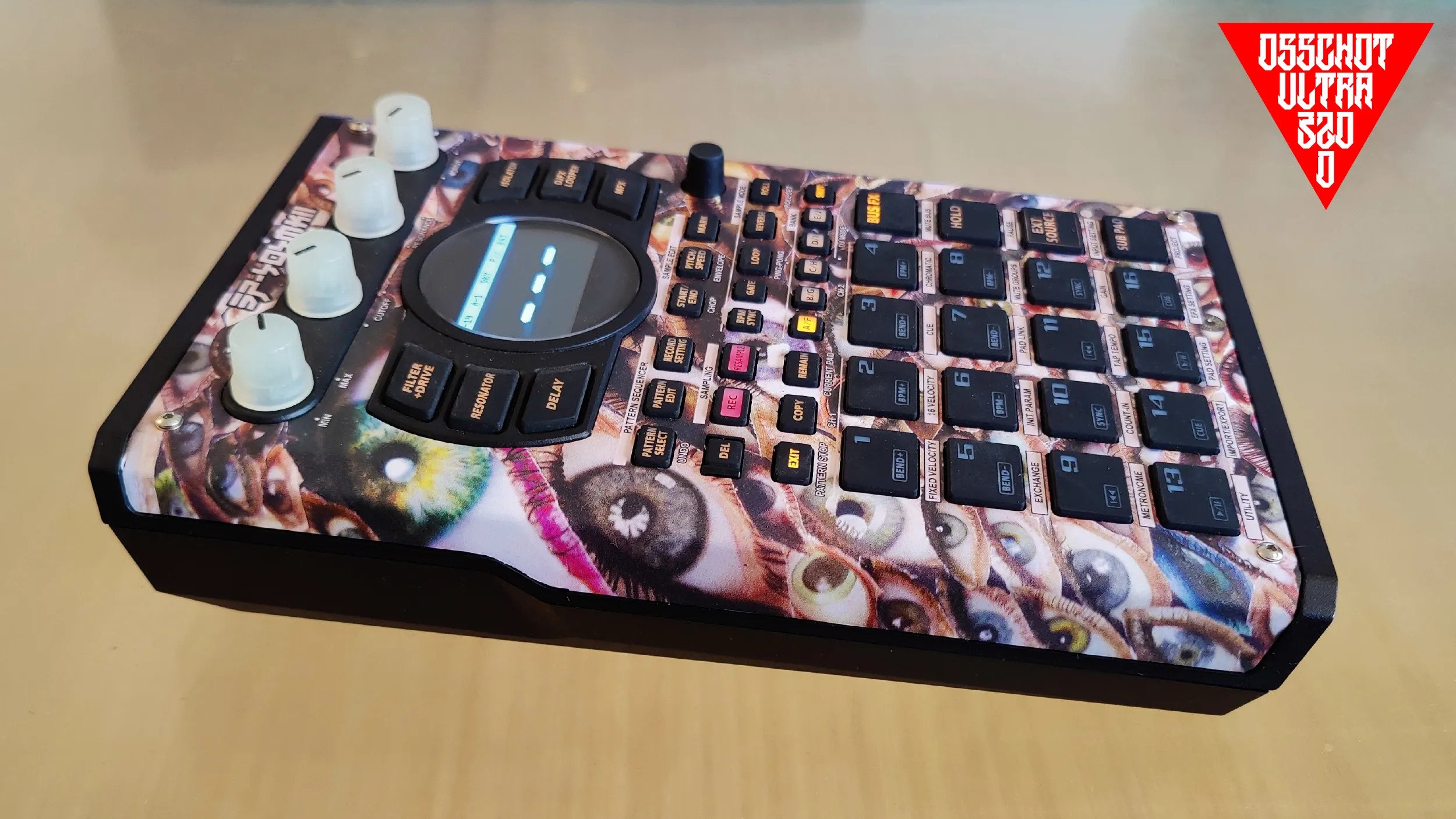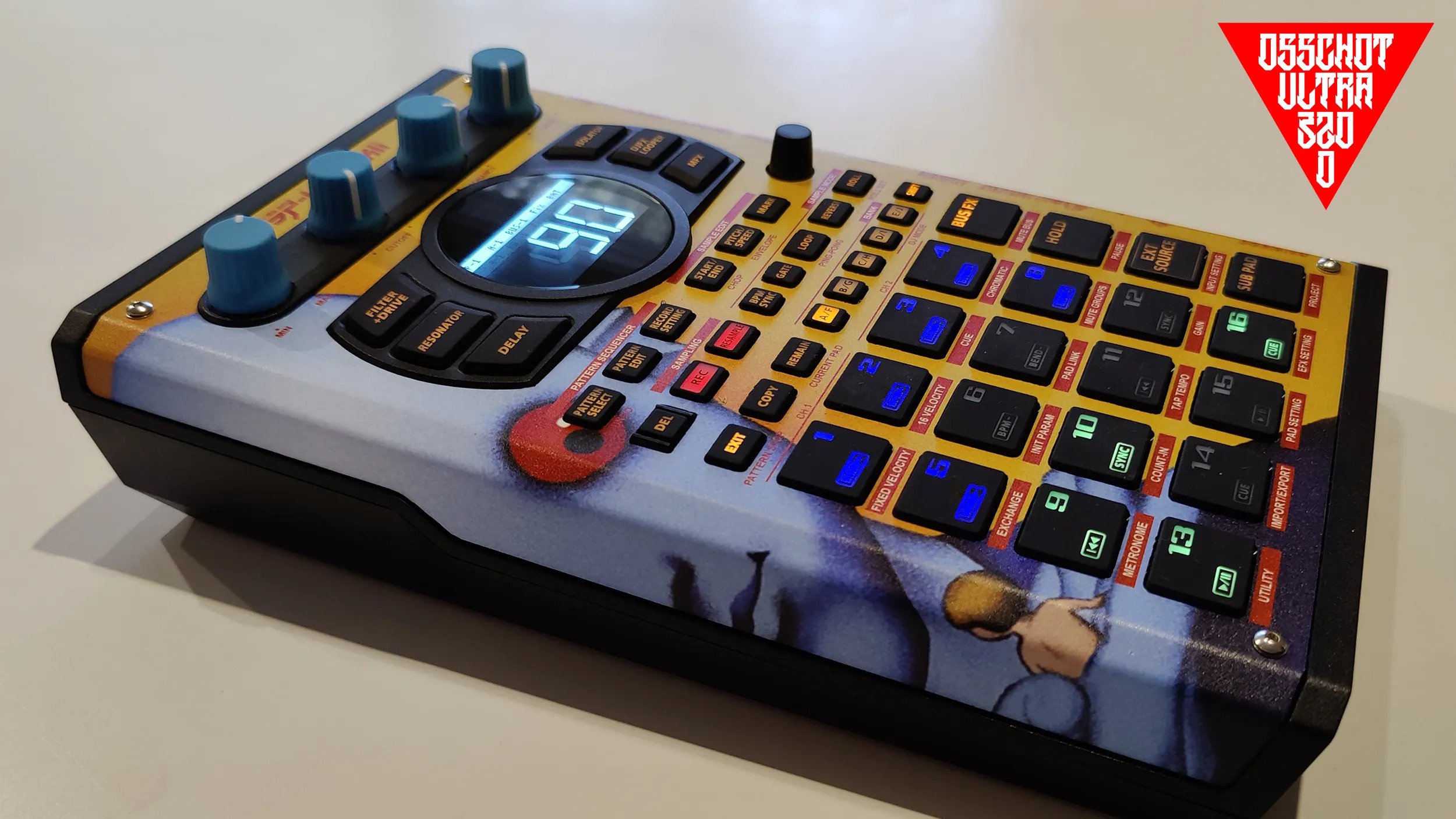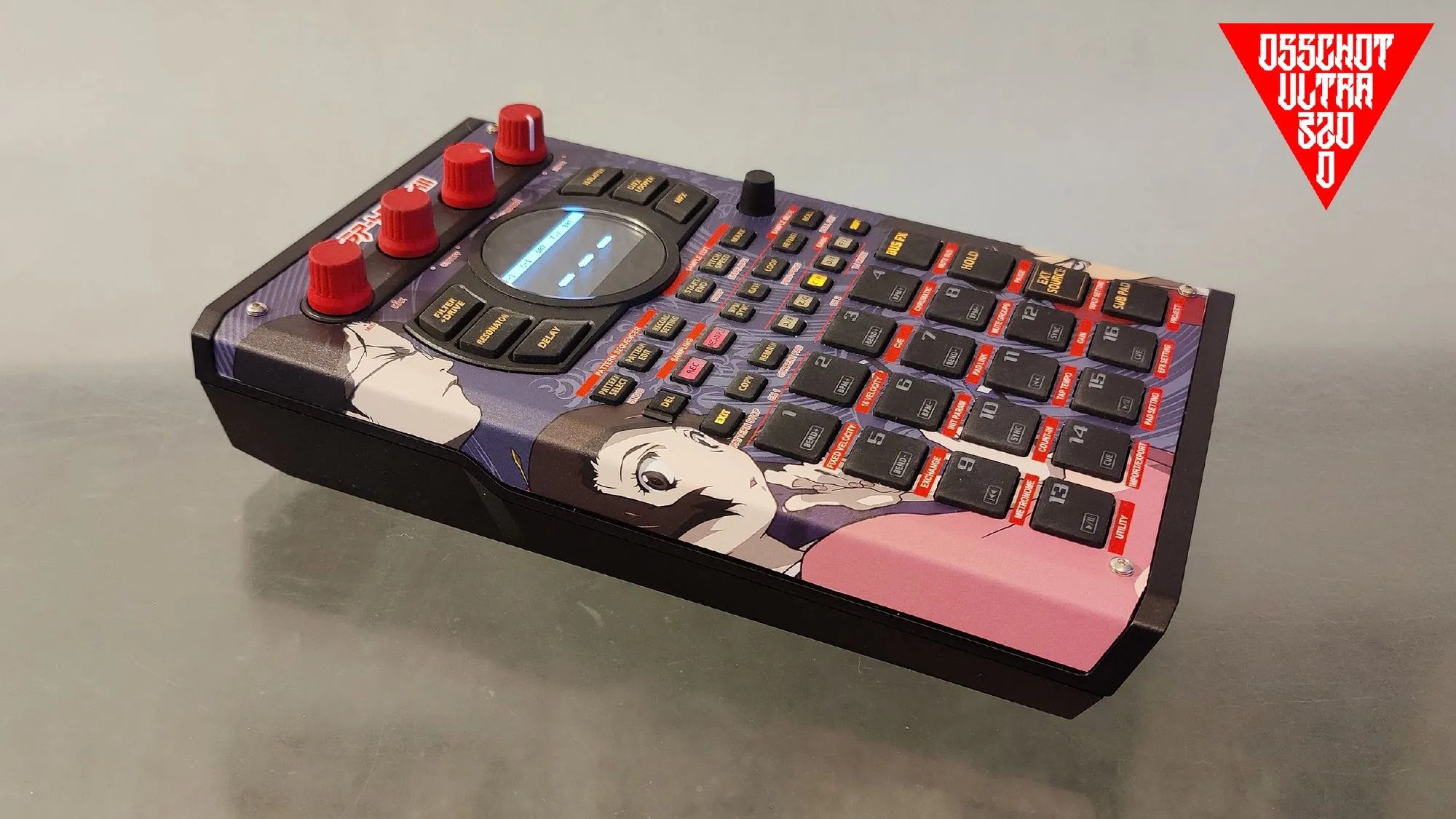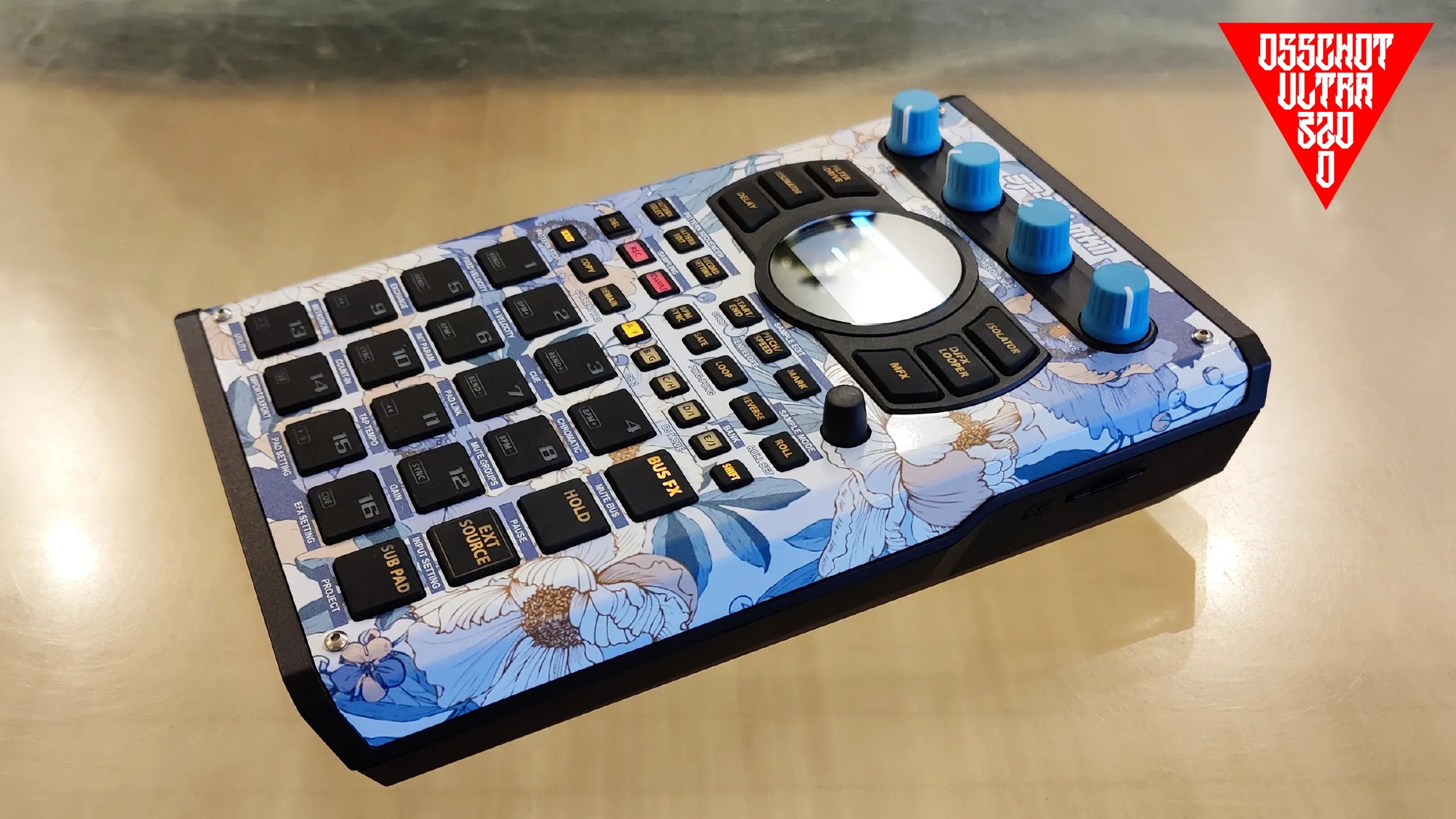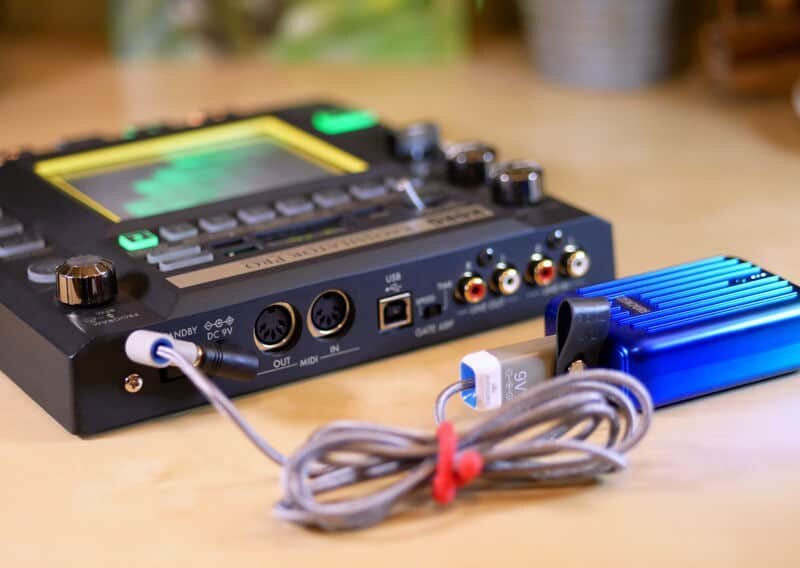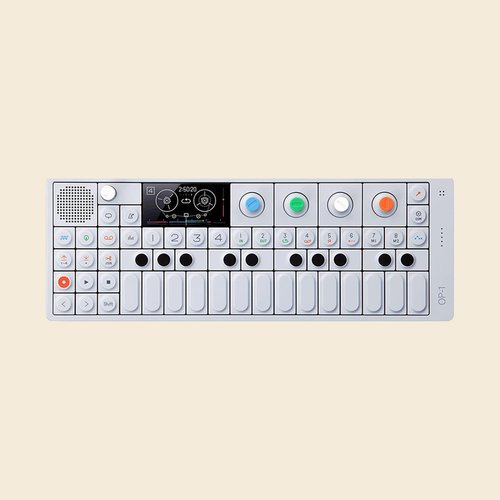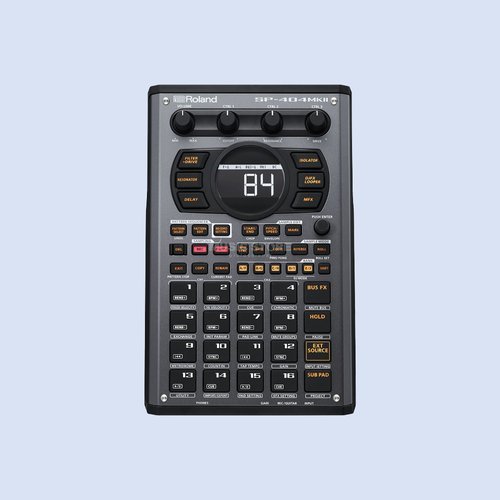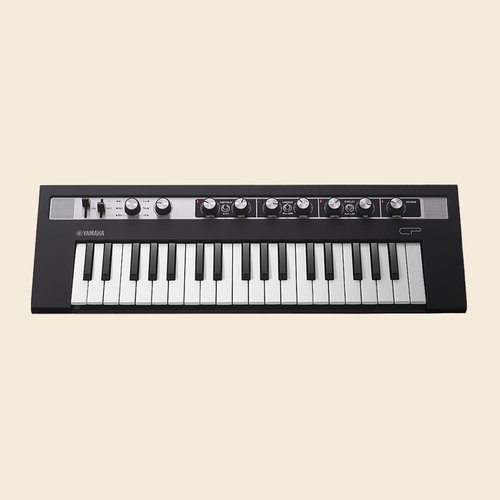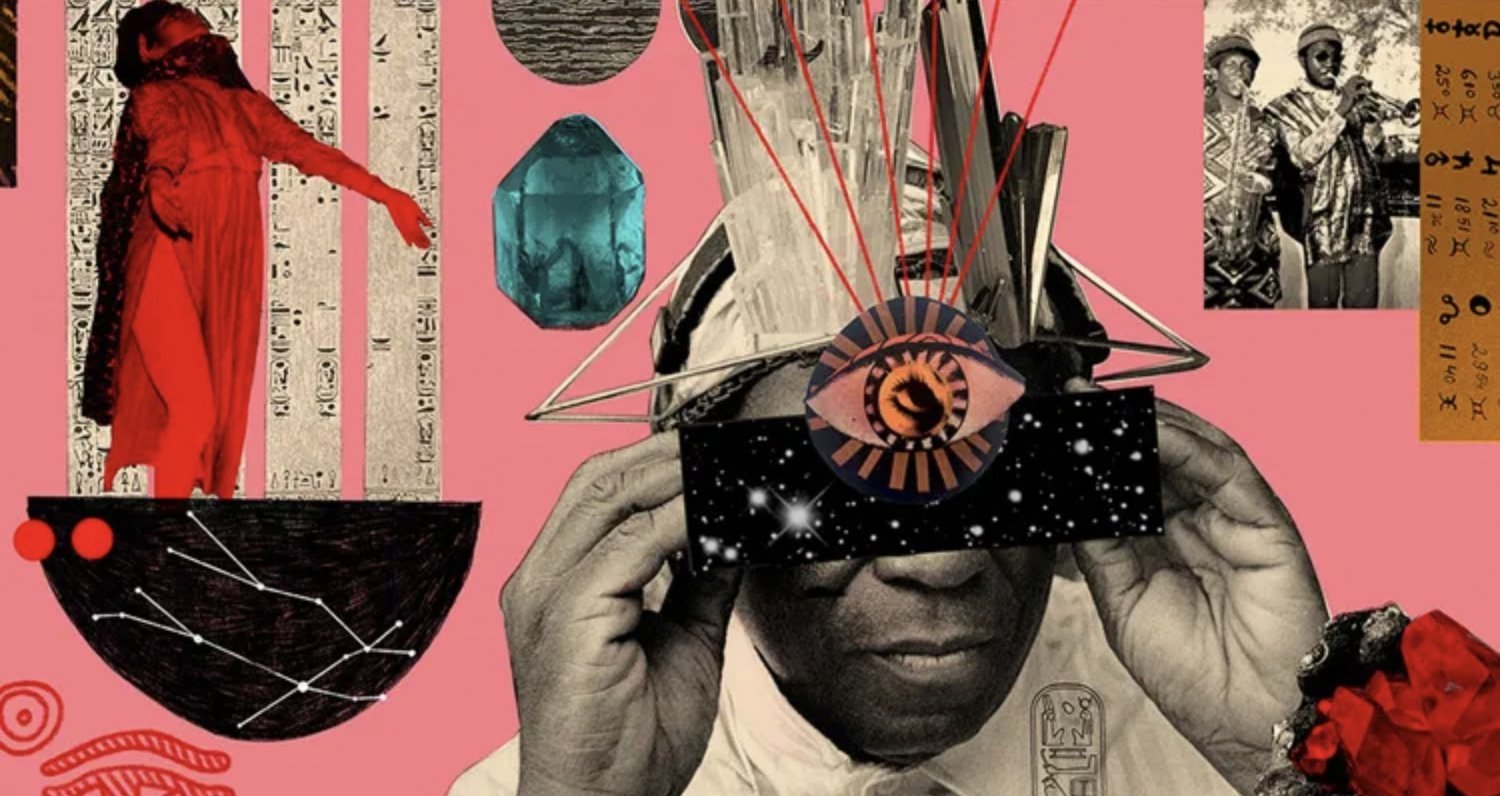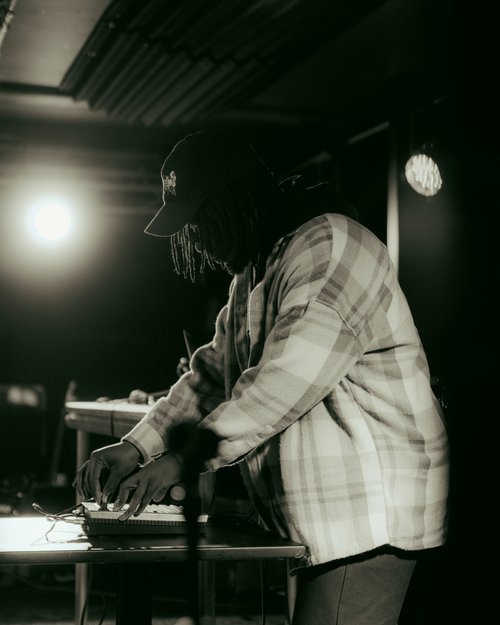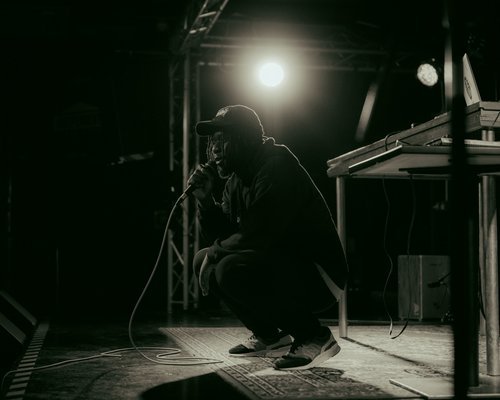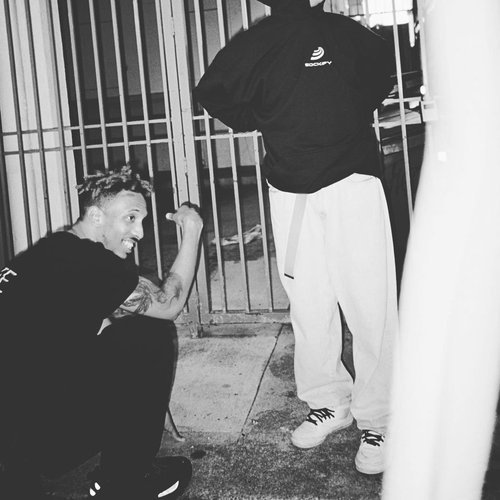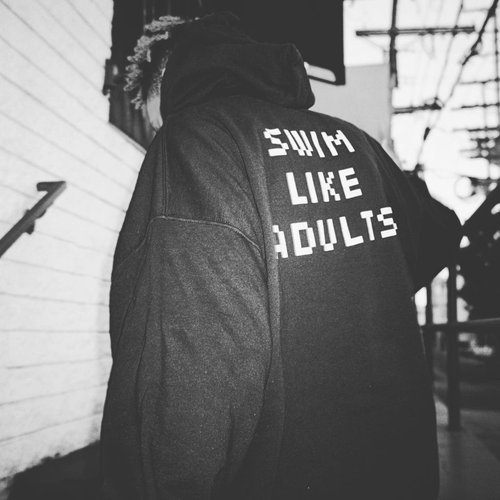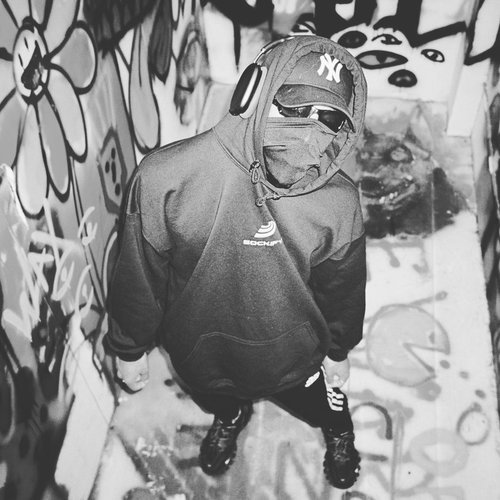Release Good Music with Good People: An Interview with Inner Ocean Records
"In terms of how I run the label, the guiding force hasn’t changed since we started: release good music with good people."
Inner Ocean Records is a flagship label within the Lo-Fi/Downtempo space.
But take us back to the beginning…
What sparked Inner Ocean’s creation?
The label started with wanting to create our own community of artists and make a space for releasing music; that was flexible and adaptable to each artists needs. We love physical media, so we were inspired to design our own releases on CD/Cassette/Vinyl… and get them in the hands of fans around the world. We started with ambient and experimental music, then after a few years started releasing lofi, beats and hip-hop which lead us later towards jazz, soul, r&b as well.

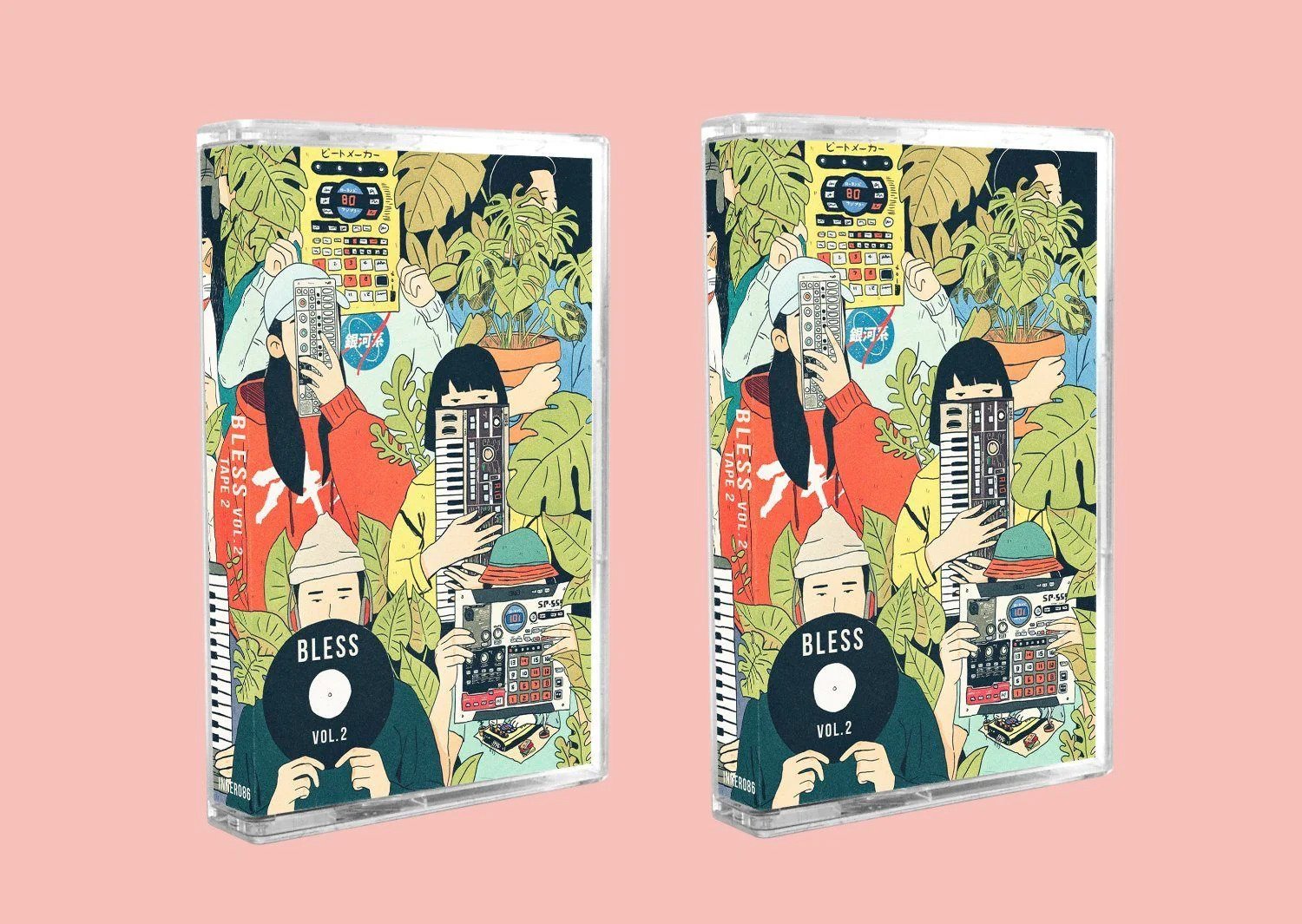
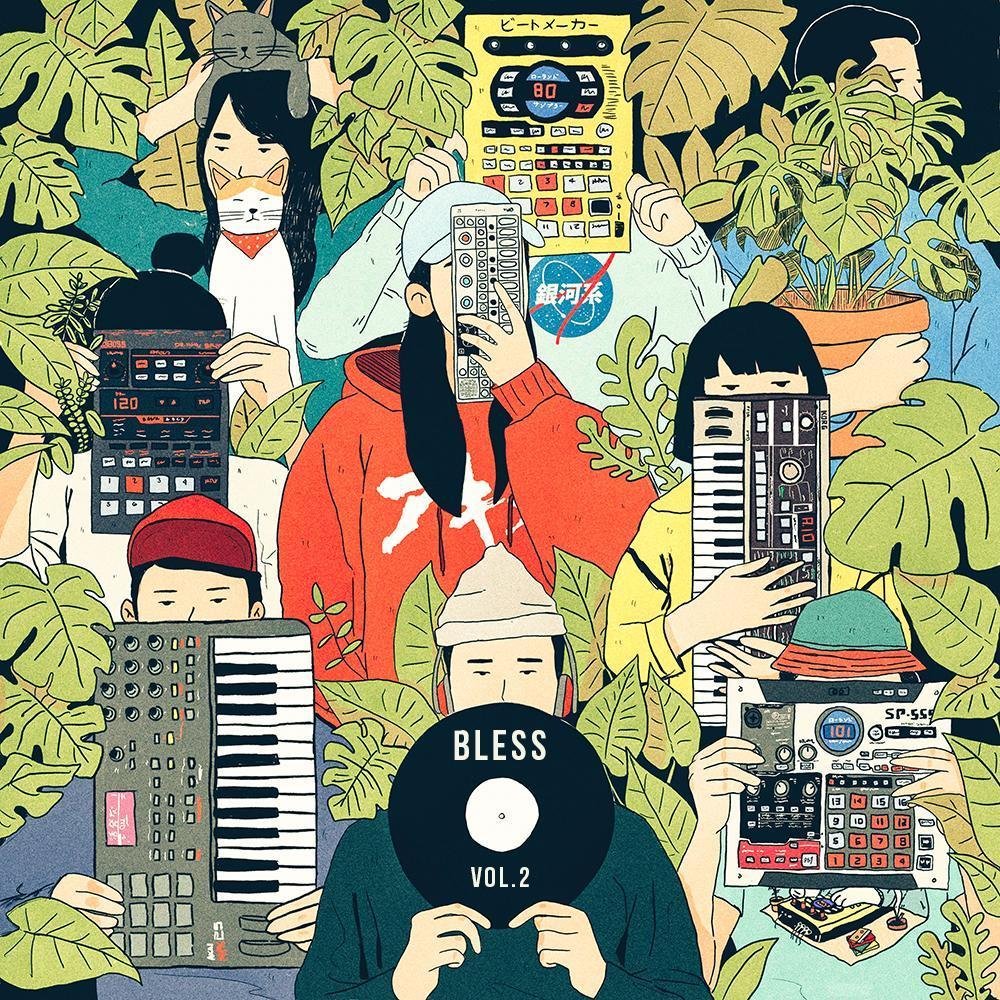
Inner Ocean is regularly mentioned as a cornerstone of the lo-fi hip hop movement, with many classic albums in your discography.
Did you ever envision the impact you were going to have with Inner Ocean Records?
Short answer is no.
I’ve always just released projects that I like and tried to slowly build community along the way. I think it’s hard to grasp what impact you will have on a global online community, especially when you’re looking at it from the inside and just focusing on the next projects you’re working on.
From the early Inner Ocean era, what are 3 albums that you listen to still and excite you - even today?
Favourite albums from the early days in no particular order:
One of the first amazing releases we put out was by Iranian ambient artist Porya Hatami, his “Land” album is still one of my favourite go to ambient records.
It’s a stunning album.
Second, my good friend Dominic Pierce from Calgary, his album “Hoop Loops” is still a massive favourite.
His art direction, subtle humour and amazing production still holds up and will be a timeless classic.
Third, Brother Mynor “Celebrities Doin Thaangs”. I’ve never encountered another album quite like this one, it’s musically brilliant and hilarious.
Inner Ocean has a strong, distinct aesthetic…
What are your biggest influences/inspirations behind these unique designs and visual identity?
I like a lot of colour and artwork/designs that stand out.
My driving force is: I imagine what an album would look like if I saw it randomly in a record store, if the artwork would stand out to me enough to want to pick it up and see what it is then the artwork is a success to me.
For those looking to dive into the world of physical releases, what’s the most important bit of advice you’d give from your experience of running a record label?
If you’re starting out printing physical music, the artwork is absolutely essential!
At this point in history no one really “needs” physical media to listen to music, so now it’s more of a collectible luxury item. So you need to take the time to make sure you design it to be a standout in someone’s collection. Go the extra mile and spend a bit more to make sure the package is beautiful.
Ambient, lo-fi and the music industry in general has really evolved since Inner Ocean’s inception.
How have these changes impacted your approach to running the label?
I think you just have to keep a keen ear to the ground, and stay on top of the shifting landscape.
Don’t be afraid to try new ideas and follow your gut on your next steps. I’ve seen the rise and fall of many platforms, artists and labels. You know that everything is going to change eventually, so you just have to put out projects that you’ll look back on and be proud of.
In terms of how I run the label, the guiding force hasn’t changed since we started: release good music with good people.
Outside of your own releases, could you name some albums for us that changed the way you think about music?
In my youth in the 90’s, I grew up listening to alternative rock, punk, metal, etc.
Music wasn’t so accessible back then so you listened to what was around you and what the scene was. Somewhere around 2003-2004 I discovered an ambient artist Steve Roach and his album “Mystic Chords and Sacred Spaces”, it was a massive 4 disc album on CD (I have an autographed version).
There were several things about this album and the artist that stood out to me:
1) musically it was on the opposite side of the spectrum from everything I knew and when I heard it I was converted to an ambient music fan for life
2) the length of the album was insane and all the tracks flowed together into a seamless piece of music
3) looking through Roach’s catalog I discovered that he was self releasing several albums a year and still does that to this day.
He has a huge catalog and he was shipping out the CD’s himself from his home studio. That might not sound like a big deal today but in those days e-commerce and running your own online store was a new concept.
That was a big inspiration for me and how I started and still operate the label.
Similarly, around the same time I came across an album by John Frusciante that he released online for free called “From The Sounds Inside”, it was all recorded himself on a 4 track tape recorder. The songs are very lo fidelity, I think this was the first time I heard something that wasn’t professionally produced in a studio and realized that music made in your house in a very raw form was still amazing.
What’s one thing your listeners/followers wouldn’t expect about you?
I’ve been making ambient music in different ways and under different names since the early 2000’s.
I think some people might assume I also make beats, since that’s what our label is known for, but beats are not my forte.
Is there one big thing you’d like to achieve with your platform before the end of 2024?
This year we have partnered with a local business I Love You Coffee to have a record store within their cafe.
We’ve been slowly building it out but by the end of 2024 there will be several thousand LP’s and tapes to shop and dig through. We are also trying to partner with other independent labels to feature their albums in the store.
Could you give us a sneak preview of what Inner Ocean Records has planned for 2025?
I can’t say.
We’ll just keep doing our thing.
Find Inner Ocean Records on
Website | Spotify | Apple Music | Facebook | Youtube | Instagram | X | Bandcamp | Soundcloud
Who should we interview next?
~
Leave a comment below
~
Who should we interview next? ~ Leave a comment below ~
Magic in Small Things: An Interview with Flapjaques
“I think that I have a pretty bright and uplifted perspective of the world and see a lot of magic in small things / my day to day. I'm often a bit bummed out when others don't have that same lens, so my biggest influence right now is a drive to share that way of seeing things with others.”
Hey Flapjaques! For those who don’t know you, please introduce yourself.
Hi! :):) I'm Flapjaques, a Chicago based lofi producer, DJ, beatmaker, etc-
I'm not so particular about those sorts of labels these days, and they each sorta apply in some ways and sorta don't in others.
Call me the Chicago Lofi Authority <3
What’s your biggest influence for starting flapjaques?
This is such a difficult question to answer…
Right now, I think that I have a pretty bright and uplifted perspective of the world, and I see a lot of magic in small things / my day to day. I'm often a bit bummed out when others don't have that same lens, so my biggest influence right now is a drive to share that way of seeing things with others.
My influences creatively have always been from EDM more or less, a lot of my synth selection is inspired by Flume, xxyyxx, & Louis the Child, and from sampling by YehMe2 & Keys N Krates. I listened to Flume, YehMe2 (when he was still part of Flosstradamus), and xxyyxx in high school, and these three have always ended up being part of pretty much any sort of mood board or thing like that I've put together since.
Discovering and becoming a fan of Louis the Child later on I think is what I'd say fully motivated me to start actually making music and thinking about pursuing it in a serious way. By that time I had picked up guitar and some very basic DJing - their being a similar age and from a similar background to myself had made that lane feel a bit more realistic. Back then, I was mostly DJing and aimed to make synth-y electronic music similar to them.
My Hip Hop taste leading up to (and during) that period had been pretty basic I guess! Very Mac Miller & Chance the Rapper focused, and I'd say my interests in the genre branched from those two.
I have fond memories of scraping Datpiff for mixtapes to burn to CD for my car rides, however; and as I revisit mixtapes like Acidrap or Macadelic, albums like Faces, or some random Earl Sweatshirt tracks, I think a lot of those sounds stuck with and influence me in a subconscious way… at least in terms of my sound/sample selection and things like that.
Your music is very organic… What does your creative process look like?
It's funny you say this! My process is almost entirely sample-based these days, although I have gotten a bit better at writing and progressing more lush layers and simple top-lines over the years. I have frequent opportunities to work with talented composers & performers, spanning a variety of instruments and genres, so their skills are often the centre pieces of my collaborative work. I see my strongest ‘areas of expertise’ being on the drums, laying down background chords, layering textures/sfx shots I've gathered on a special harddrive for almost five years now… and more recently chopping up pretty much any kind of sample- more of a mood thing there.
With any project though, I almost always find something I like to start with, even if just a quick 2 second sample, and build everything else around it.
Your choice of performance hardware is the Roland SP-404 and SP-555… How have these two pieces of equipment affected how you make music?
Not really at all to be honest! Both are more performance mediums for me than anything else. I always intend to take some time to sit and cook with either, but I find it to be a bit tedious and ultimately less productive than other workflows I'm more comfortable in.
My thoughts here apply not only to the 404s & 555 but really to a lot of analog/more classic gear in general. I think it's a somewhat fun, albeit difficult decision of the modern producer to decide which of the more 'old school' workflows are beneficial and worth the payoff, and which aren't worth the effort.
It's sometimes a bit ‘trippy’ to be sitting in a studio setting, Youtube playlist in hand, with the LED display on the MPC screen looking up at me from my lap, wondering if the magic of the sampling workflow is a bit lost in this more modern flow… but more recently I like to think there's an awful lot of nuance & empowerment in it.
The 404's ability to run off batteries is something that offers a great deal of freedom. I hadn't made use of it for a regrettably long time, but it's become a great motivator for getting myself out of the house and into new & interesting locations for filming content. This has a somewhat subtle way of influencing my workflow, meaning if I'm looking forward to going somewhere in particular, I'll probably put together a small collection of tracks ahead of time to then perform there. Although sometimes, I change my mind about what I'd like to record last minute anyways.
You’ve kept up a steady stream of releases… Do you ever get ‘beat block’?
And how do you overcome that?
I can't say I really do anymore, or at least not recently enough that I remember. I'm fortunate to have both the time and energy to split up my overall workflow into different, smaller workflows, and I would say this is the driving practice that keeps me making music on an [almost] daily basis. I find chopping samples on the MPC to be really fun, and if nothing else, will often spend at least a whole evening cutting up a few samples to finish in a DAW later in the week.
There's always a bit of luck and magic to this particular workflow, so some weeks I may prep more than 10 of these little "sketches" before finally making it to DAW, others I may only get one or two. When this workflow gets tiring, or I run out of sketches to make into full beats, I'll then move into more traditional DAW-based workflows, often with files from collaborators or with loops I've written and set aside from my 3rd, far less frequent and least favourite variety of flow (melody writing day lol).
Apart from this, I guess being organized is both fun and practical!
Lately, I've had a lot of fun stepping back from my overall hustle every few months and putting together a new kit to guide my drum soundscape for upcoming projects. I'll usually base this on one-shots I hear in reference tracks that I've noted and plan to use later, and I suppose with each iteration of doing this I end up with sounds I put into different 'Flapjaques Kits'. This usually becomes the main folder I use for my drum selection. I remember a time where I'd do the opposite - make a point to always use a different snare in every beat for example - and I've found this newer approach to be more productive and also lead to a more cohesive sound for myself.
The ‘Flap’ kit is always on my MPC and makes my workflow much easier, which may be a big part of why it's so fun; things are almost ‘plug in and play’ in a sense. Those 'sketches' also allow me to do a bit of arranging in my head, to envision how the sections will loop & progress, so by the time I hit DAW, I already have a pretty solid sense of how the beat will go… and I just need to add some additional layers and textures. I mention this because even when not using my little sketch workflow, I've found it useful to engage in a similar practice of looping and listening back to melodies that collaborators have sent me the day before I start working on the track. The overall approach for me I guess is a lot of thought & planning… so that when it's time to execute, the energy is where I'd like it to be, and I already have a clearer sense of what I'd like to do [with the track].
You’ve created a strong and supportive group of listeners… Was this a conscious process?
Do you have any tips for cultivating a strong creative community?
Aw thank you!
I don't think it was much of a conscious process in the early stages or even last few years of my "career", which feels a bit weird to say still, but definitely has become more of a conscious process in this past year and moving forward.
From the start, I've always tried to be very responsive and available to both opportunities and conversations with other artists in the scene, both of which I think have been the driving factors in building the audience I have now. Like most Lo-Fi producers, I think the majority of my listeners are other producers or artists who, apart from enjoying what I do, may be seeking advice, as well as inspiration, friendship, or any variety of things really. I often think there's an interest in me beyond just what I'm publishing week-to-week on DSP's, or daily on Reels & TikTok. This is something I have always really embraced.
Ultimately, I think that what I'm doing right now is pretty achievable. Most people can emulate what i’ve done through consistency, as well as a willingness to be flexible with their idea of what their creative career will look like. Mine looks much different than I dreamed it would when I started (I think) 5 years ago now, but I wouldn't have it any other way. I think that with the tools, platforms and resources available, there really are enough ‘pieces of the pie’ to go around!
Who are 3 artists from your community that you think readers should check out?
Elan Brio was an artist I was listening to before I had started making music myself, and has remained one of my favorites to this day. Always has a solid knock & groove; Elan is a go to summer vibe for me.
Half Blue is an artist definitely keeping that rawer, sampled Jinsang & Nujabes era of production alive, love to see it out of the Midwest as well!
Milocero has been hitting my summer rotations a lot as well this year, bro goes crazy on the subs :)
What’s the most challenging thing you’ve had to overcome as an artist?
I think not overthinking things too much… kind of like how I've overthought my answer to this question and rewritten it a few times now lol!
I find myself in a sort of weird in-between these days, where I definitely want to be taken ‘seriously’ as an artist, but I don't always think my output is all so 'serious'. I hope to not come off the wrong way though - I think there's a great deal of freedom I've found in allowing myself to revisit samples & loops, play around with less productive workflows, and sometimes just see what happens.
For a long time, I had thought every end result needed to be a masterpiece, or at least I wanted to feel I had flipped a sample or built around a loop in the best way I ever possibly could. This often lead to a lot of meticulous worrying over small details, that now I look back, ultimately took away from the fun moments and vibes I capture now. It depends on the day, but most of my work as of late are just quick little bumps.
I haven't revisited too much of my own work (outside of the slowed reverb collection I've been slowly trickling out through the year) although I'd like to think I will one day; maybe when I feel like I truly have the freedom to take my time on a larger, more cohesive project. Something like a debut album? For now though, things stay quick and every day is new. It's a workflow I've grown pretty accustomed to over the past year and I wake up excited every day to do it.
What’s next for you in 2024?
Chicago Lofi Authority is my latest vision and the project I'm most excited about, for 2024 and years to come…
For now, it kind of just exists as branding for my releases & mixes with a more distinct Chicago style to them. I plan to have a 24/7 study station up by the school year on the Flapjaques Youtube Channel with a soundscape similar to the other mixes I've put out this year. This will probably be the point at which I start to include some other carefully handpicked artists in the CLA ecosystem.
For those who haven't visited the city, they can think of the style of beats featured as the more upbeat, productive, and uplifting sound; in contrast to the overwhelmingly relaxed and downtempo instrumental mixes currently available.
My latest mix, "lo-fi summer soul-fi chicago street race type beat mix", is my most exciting collection to date and reflec I plan to showcase. The mixes on my channel feature seamless transitions, similar to a DJ set, which is an aspect of them I've always taken a lot of pride in! The 24/7 station however will probably feel more akin to a traditional Lo-Fi radio. At this stage, I almost feel like I'm starting over and just spreading the word, but over time I plan for CLA to grow as an organization of midwestern artists that hosts lo-fi focused, hip-hop adjacent events throughout the city.
Apart from this, I plan to keep up my weekly release schedule of at least one new single each week, often a handful, and have a few larger bodies of work in the pipeline for later in the year, maybe 2025 ;)
Find Flapjaques on
Spotify | Youtube | Apple Music | Instagram | X | TikTok | Bandcamp | Soundcloud
Who should we interview next?
~
Leave a comment below
~
Who should we interview next? ~ Leave a comment below ~
Take Time to Hone Your Craft: An Interview with Ghost Phone
“The most challenging thing I've had to overcome as an artist is myself. Like a lot of people, I can be my own worst critic and put a lot of pressure on myself. I went in to this year determined to approach it differently and shake myself out of that mind set, I thought really hard about why I do this, what what I wanted to achieve and how I measure my own success.”
What is Ghost Phone all about?
That's an interesting question, I think Ghost Phone means different things to different people. Fundamentally I started it to join the dots between all the music I love, to merge US Rap and RnB sounds with UK Bass music. To push the limits of what RnB is and what it can be. It's very much an extension of my personality and my tastes. A personal project.
Ghost Phone has a really unique aesthetic.
What influenced you when you were putting together the concept for Ghost Phone?
There were lots of things that influenced the Ghost Phone aesthetic, some more overt than others. I'm certainly not the first to do it but I like that serious ‘music meets fun’ artwork vibe, the classic ‘Tom n Jerry’ records being a great example. I've always enjoyed pop art, so was fascinated by the idea of taking iconic imagery and making it your own.
On a deeper level I think the Ghost came about through a desire to not make everything about me. In recent years, everything is very much based on what you like look like and how you market yourself, and not so much the music. I get that it's kinda of necessary in the modern age but I didn't want to indulge that too much, so created a character instead. No shade to anyone that does do it that way, it's just not really for me.
You’ve had a strong influence on the Bristol & London underground electronic scene, while keeping a pretty low profile.
What is it about anonymity that creates so much hype in the UK underground scene?
I'm not sure I've had much in the way of influence to be honest - but I'm flattered you think so!
I don't hide the fact it's me… I just like to keep the information minimal if I can. People see an artist name or a tracklist and use this to decide whether they are going to listen or not, I hoped that doing it this way might encourage people to listen first and then decide.
I feel like anonymity can go either way, it can create real intrigue and mystique around what you do… or you can disappear in to obscurity. It's the risk you take when you do it that way.
Has it been difficult to promote the label without using social media? And what advice can you give people who don’t love promoting themselves digitally?
I do use social media but maybe not as intensely as others, I don't feel that pressure to ‘beat the algorithm’ and I'm not really a fan of content for contents sake. If I have a month without a show or a mix etc then I simply do not post anything and I'm fine with that. I like content that reveals something about the person doing it, that could be them talking about records they love, an insight in to their creative process, even them being funny (I love Luke Una's videos for this).
My advice to anyone who doesn't love promoting themselves online is to do what feels right and natural to you, there's no right or wrong way. just personal choice. Also, if you're a little camera shy (like me) you don't have to promote yourself necessarily, you can promote your art instead. You can post graphics, music videos, even sharing other peoples work can give people an insight in to you as an artist. Everyone wants to go from A-Z super quickly but it's not a race, I think it's important to take the time to hone your craft; build and connect with fans who genuinely rate what you do.
You’ve kept all of your releases solely on Bandcamp, with physical releases on limited-run vinyl.
What’s some advice for those who want to keep releases physical and stay away from digital streaming?
I do it that way for a few reasons. I've spent most of my life buying vinyl in record shops, so it's very much where I come from and what I know best. Its taken me a while to get my head around streaming and the benefits of it, if I'm being honest but it's something I'm starting to slowly delve in to.
My advice for anyone focussing physical products is that it's tough right now and to be prepared to not make a huge amount of cash. What you do get though, is a tangible item that you can keep forever. So it's swings and roundabouts.
What are 5 records that are essential to your collection?
1: Teedra Moses - Complex Simplicity
I love this album so much I named my pet tortoise after her. Every track bangs, it's perfection.
2: Snoop Doggy Dogg - Doggystyle
My dad used to play this in the car when I was young, it was my introduction to rap music. It also ignited my passion for p-funk, 80s groove and electro funk.
3: The Dream - Love Vs Money
Space-age RnB that still sounds fresh.
4: Nosaj Thing - Drift
I was a huge fan of the whole LA beats scene and Nosaj was up there with the best of them. Deep, melancholic business.
5: Yazoo - Upstairs at Eric's
Alison Moyets vocals sound so powerful and soulful on this album, truly sublime.
You create eclectic compilations of different genres, focusing on underground artists. How do you discover the music you want to release?
The music comes to me in different ways, some people send me stuff and sometimes I reach out to people. If I like thier work I won't necessarily go straight in asking for tracks but I will open up a dialogue, send them some music, tell them how much I love what they do and try and build some kind of relationship. If that develops in to a working relationship, then happy days! But if not, you've still made the connection with an artist you like and respect - which is still very much a win.
You’re working on your first solo release alongside Wilfy D … What inspired your new project?
Wilfy D is hands down one of the best producers operating in the UK right now, what he does transcends mere club tracks. He's writing actual songs. We have a new release coming very soon alongside a super talented up-and-coming London MC. We wanted to make a modern, vocal-led UK funky anthem that bangs in the club, but could also do bits on daytime radio. More to come on that very soon.
What’s the most challenging thing you’ve had to overcome as an artist?
The most challenging thing I've had to overcome as an artist is myself.
Like a lot of people, I can be my own worst critic and put a lot of pressure on myself. If I didn't have a gig for a month, it would be the end of the world and I felt as though I was failing. I went in to this year determined to approach it differently and shake myself out of that mindset… I thought really hard about why I do this, what what I wanted to achieve and how I measure my own success. I decided to not focus on the industry stuff so much and just create art that I'm happy with, learn new skills and progressing. I feel like as long as things are moving forward and I’m feeling creative and happy, then I've succeeded.
What’s one goal you want to achieve with Ghost Phone?
My primary goal with this project was to create something that is very me and kind of exist in my own lil’ lane and I feel like I've done that. However, I always want to grow and evolve, in the future I’d love to release full albums from artists with vocalists, full artwork etc.
And what is next for Ghost Phone in 2024?
Tell the people what you’ve got going on!
Ive spent most of this year getting my head in to production more. A massive shout out to my homies Wilfy and DJ Poleaxe, they have both taught me so much. I feel blessed to have such talented friends.
I've got my first beat tape dropping in the next few weeks, a couple of remixes, more releases, more shows and radio spots. I'm always putting in work and doing stuff because after all these years I still love it, It doesn't really feel like work. I'm gonna be doing this until I'm literally not able to anymore, I'm a lifer in this game.
Who should we interview next?
~
Leave a comment below
~
Who should we interview next? ~ Leave a comment below ~
Inspiration is Everywhere: An Interview with Bootleg Boy
“For finding the ideas/inspiration I’m a massive consumer of YouTube, anime, music etc. so I generally note down any ideas I have for videos, and the inspo can come from anywhere.”
We all know ‘The Bootleg Boy’... but how did it all begin? And why?
The bootleg boy started back in 2017. I was smoking at the time and used to love watching simpsonwave videos, they just felt nostalgic and chill. I’d been making videos on YouTube under other channels for a while but not particularly successfully, so decided to try a new channel making my own simpsonwave and it took off almost over night. Then I put hours into making more and more videos, despite not having the tools or skills to make them as well as other creators.
Bootleg Boy has transformed from a music sharing platform to a label and an artist persona… Has running one of the biggest platforms for lofi listeners changed how you view the genre?
I feel like I’ve been around this version of ‘Lofi’ from the early days. And I still love the old style, gritty beats using samples and capturing emotion. But I think it’s clear to everyone that ‘Lofi’ has changed and morphed into something different now, which is fine and natural with anything, but I definitely still miss those old-school feeling tracks. They’re still around, but a lot of the artists I grew with aren’t making that style anymore, so I definitely view it all with nostalgia-tinted glasses… and respect the producers that are staying true to the sound.
What’s one thing your listeners/followers wouldn’t expect about you?
I honestly think a lot of my listeners probably don’t realise how much music I produce and how much time I’ve been putting into the artist side of ‘bootleg’, but that’s totally fine I’m happy to keep the channel and my artist persona separate, to an extent. Most of my subscribers signed up for the mixes etc not me trying to push my own music, so I try to find a natural balance with how much of it I share through the channel/label.
What’s your creative process for making videos & music?
My creative process has changed a lot over the years.
With YouTube, I’ve found having specific schedules etc to stay consistent. But as for finding the ideas/inspiration, I’m a massive consumer of YouTube, anime, music etc. So I generally note down any ideas I have for videos, and the inspo can come from anywhere. Then I’ll make videos throughout the week and take ideas from my notes.
With producing music I try to be as fluid with it as possible, never forcing it and just making whatever style/genre I want at the time, whether I have any intention of releasing it or not. Playing around with different genres has been so important in me growing as an artist.
What’s one piece of advice you’d give to someone who wants to start a YouTube channel?
I’d probably say never underestimate how difficult YouTube is.
Most channels fail, especially if you just try to copy a successful channel. You have to focus on your USP and be true to yourself. Take inspiration from those that are doing well, but if you try and emulate it unnaturally your audience will feel that.
Is there an album that’s changed the way you think about music?
Untrue by Burial changed the way I viewed production completely. From showing me how to utilise texture, to the niche samples and even how important it can be to not focus on making things ‘perfect’. And I mean ‘perfect’ in the scientific sense, you don’t want to sterilise your music, the ‘human touch’ is something I’m always trying to bring out in my music.
What’s the most challenging thing you’ve had to overcome as an artist?
The hardest thing is learning the tools. I’ve always been quite creative, and for years I’ve been listening to submissions all day every day so I can really recognise what I like, and don’t like, immediately. But it’s taken years of practice (and tutorials) to actually be able to make my ideas a reality.
How do you stay dedicated to your project after almost 10 years of working on ‘The Bootleg Boy’?
I stay ‘dedicated’ by not being harsh on myself. Allowing myself the room to change styles/genres with whatever I feel like. Not chasing trends and forcing myself to do what gets the most views, just releasing the music I enjoy listening to and making the videos I like watching. Its selfish really, but I just make the content for myself, the fact other people want to consume it is just an added bonus.
What one thing you’d like to achieve with your platform?
I don’t think there’s one thing that would feel like ‘I’ve made it’, but just continuing to give a platform to small artists. Whenever I work with artists and they then get big later down the line, I feel proud to have recognised that and supported it, when others maybe wouldn’t have.
What’s next for you in 2024?
2024 has already been big for the label, it’s becoming a big focus for us. And then as a producer, I just want to collaborate with as many of my friends and artists I respect as possible.
Find The Bootleg Boy on
Youtube | Spotify (Artist) | Spotify (Playlist) | Apple Music | Instagram | X | Soundcloud |
Who should we interview next?
~
Leave a comment below
~
Who should we interview next? ~ Leave a comment below ~
Stay Consistent: An Interview With ohricky
“Being consistent is also difficult. Sometimes you don’t wanna make a beat video, or promote your music, but thats part of the game and I take it serious because I love what I do.“
What’s the thing that made you start making music?
I always wanted to sample. To me the art of taking music and repurposing it keeps it alive and honors those who created it. I used to work nightshift alot and I always had trouble sleeping. When you’re up late at night its nice to have something creative to fill your time.
What is your creative process?
I only sample music I like to listen to, then I use my samples to communicate emotions over my drums. I’m also obsessed with textures, so running my music through cassettes, vintage samplers, cassettes and cam corders is a way I feel intrigued by music. What can I do to make it sound dirty?
In every video you post, you always have incense burning…
What’s your favourite incense scent? And how did you get into the habit of combining it with your performances?
Man, I get a lot of questions about the incense… its actually kinda funny, I love incense because it reminds me of my grandma, but it also makes me feel at peace, and clean. I love candles too, but incense is more relaxing.
The smoke-shop next to my house has this one called dragons blood, smells wild, sandalwood second.
How do you handle creative block?
If the music isn’t fun, I just stop and put it down and go do something else. I love making beats, and if I’m not in love in the moment its not worth forcing. Go read a book, listen to another genre, go do some other creative thing. I always itch to cook up music so If I don’t feel it right at the moment, I know I will later.
A controversial question now, you make beats on lots of different equipment but what gear is your favourite and why?
My favorite piece of gear is the Pocket Operator. It doesn’t do more than any other sampler by a long shot, but Its always therapy when I use it. I can make beats on it mindlessly. These days I spend most of my time on my SP-404, I love that thing too, its been with me everywhere, in multiple countries too!
What’s an album recently which has changed the way you think about music?
Ziggy Stardust is an album I just fully heard this year and It completely blew my mind. Honestly kinda made me reconsider what I consider to be great music. It’s inspired me to learn more, I’ll always be a student in music and David Bowie makes em wanna be better, even as a beat head.
What has been the most challenging thing you’ve had to overcome as an artist?
Having to deal with rejection is hard as an artist. It takes time. I have been very blessed with people receiving my music well, I’ve been selling tapes and getting streams the past year or two but for most of the time I’ve been making beats (6 years), I haven’t had anyone interested.
Being consistent is also difficult. Sometimes you don’t wanna make a beat video, or promote your music, but thats part of the game and I take it serious because I love what I do.
What’s next for you in 2024?
Coming off of SPIRITS! Im very proud of what me and impreshn cooked up, the luv is real and People loved the tapes we did.
Up next is some work from myself and B4Lasers, another solo project, Bump Show Vol.2, more cassettes and some vinyl pressings!!!!
Find ohricky on
Instagram | TikTok | Spotify | Apple Music | Bandcamp | Soundcloud | Youtube
Who should we interview next?
~
Leave a comment
~
Who should we interview next? ~ Leave a comment ~
Don’t Ask, Just Give: An Interview with Amed One
‘There’s just a particular sound that comes with records, that warmth and crackle, it’s like a warm fire. Quite lovely.’
Why did you start making music?
I started making music really because I was bored. That’s not why I really started, but that’s what got me into it. I was going on a really long car drive and I was looking for apps to download to keep me entertained, I was going thru my dads purchased apps and I saw Beatmaker 2, sounded cool so I downloaded it. Definitely wasn’t an immediate click, I really didn’t use it that much until probably like 6 months later (as you probably know learning how to use a DAW is quite a pain). Once I had a lil understanding of it, it became a lot more fun to use, I was just doing it for fun and also because it’d be funny to have my friends rap over them - none of them were rappers but we’d make a few songs to have some fun. But time went on and I kept making more and more beats that I really enjoyed, and eventually I found myself making beats for hours a day. Then I started taking it a lil more seriously and eventually decided I was going to commit my life to beatmaking and take it to the end.
What is your creative process?
My creative process is pretty simple, I just look for a dope sample and then try and do something cool with it. Then I get some dope drums and see what I can do. It pretty much goes like that every time, I like to just find samples that really engage me, samples that catch my eye, and then just make something dope with it. The goal with my beats is to make fully completed tracks, ideally to put on a project. And I always strive to make bangers. Not just bangers, but the most exceptional bangers of all time. I’m pretty much always trying to make my next best track. And I really enjoy taking a track as far as I can. Doing everything there is to do until I don’t even know what else I could do.
You create all of your beats using vintage records. How did your love for vinyl start and what’s one record you couldn’t live without?
My love for vinyl really just started because that’s what authentic boom bap samples from. I just got a turntable and some records to make my beats more authentic, and then eventually just fell in love with the sound. There’s just a particular sound that comes with records, that warmth and crackle, it’s like a warm fire. Quite lovely. Over time I’ve just enjoyed that sound more and more, and recently I’ve been fully committed to only sampling from my own records. It took some time for me to get there, especially since youtube is so convenient, but it’s probably been a year at least that I’ve been on vinyl only, and now I could never go back. It’s just not the same.
One record I couldn’t live without would be 2001 - Deodato. Not because it’s my favorite album or artist, but because of what it represents. It was one of the first records I ever got, I used to only get records for a dollar and I actually found that one at the goodwill bins. When I first heard one of the tracks on there it blew my mind. Felt like I was tripping. That record signifies the start of my true love for vinyl and because of that it holds a special place in my heart.
We've worked together on a Sample Flip Competition a while ago and you've been releasing new sample packs ever since. What’s the secret of a great sample pack?
The number one secret. The number one secret.. I know it and I’m glad I do. The number one secret to a great sample pack is giving. Giving an experience beyond expectation. Not just giving some samples, but creating an experience that goes far beyond the price that money can even buy. And not just to make a better pack to get more sales, but to create a great pack as a donation to your community. A pack made with the intention of providing pure genuine value to the user. A gift that asks for nothing in return.
How do you handle creative block?
I just keep making beats really. Sometimes it’s hard, but it doesn’t stop me from making beats, it just makes it not so enjoyable. But in the sense of really getting over a creative block, I find that I’ve usually lost my original vision. I find that I’ve lost my true why for making beats, and when I do, I try my best to take it back to the start. I’ll usually go back and reread my goals, listen to the music that inspired me in the first place, and think about what it was in the past that really motivated me in the first place.
I find that creative block often happens because we make beats with the wrong intentions. Like making beats to impress people, or to get something out of it. Eventually as you do that it runs dry because it’s not genuine. Sometimes though, it’s just not clicking and I just need a break. If so, I’ll try to tap back into the vision, and then makes beats first thing the next morning, purely with the intention of doing it for myself and my own fulfilment from it.
Your Instagram page has a strong aesthetic theme. The community seem to really resonate with it. What advice would you give to artists who want to stand out on social media?
I would say stop taking advice and start experimenting. Just make a bunch of videos really, that’s the only way you can find your own style. You get an idea that sounds interesting so you explore it, and then you do this over and over and over again, until eventually your videos have a similar vibe to them and you find what works and what doesn’t. You also find what you like doing and what you don’t.
I would also recommend that you make the content for yourself. That you make videos that you think are dope, and you try to impress yourself with your content. And make the videos that you would enjoy watching. It’s funny to say but I love watching my own videos, and it makes sense because I make them for me. I’m the person I’m trying to please when I make the videos and as a result I am more pleased with the content. Which results in a more enjoyable content creating experience, and then as a result of that, people like watching my videos. They can see that it’s genuine and that it’s not trying to get followers or trick the viewer someway, it’s kind of just a fun way of sharing my music and artistic expression.
Another thing - don’t ask, just give. Provide value. And cut the fluff. I’ve learned that literally nobody cares, they just want the thing that your video provides so I get straight to the point. Like I’ll literally chop it down to the exact .1 second to get to the point faster. It’s a balance of making it for me and then optimizing it for growth, without sacrificing quality. And overall it’s about providing a great experience for myself first, and then the viewer. And likes and follows are never the goal, just the result.
Who are 3 artists from the community that you think readers should check out?
H. Potta for sure. Nastiest most authentic shit out there. For someone who wants another true boom bap experience, that’s a great place to start.
DJ Clif. Also some authentic boom bap shit. One of my favorites to see. Dope beats, and great cutz, real dope scratching, overall a favorite of mine.
Pink Siifu. My man just has a dope style. And authentic, I like the vibe he gives off. His music isn’t really that similar to what I go for, but I like his voice, would love to work with him and see what we could do.
One more - Wiseboy Jeremy. My guy has the voice. Dope style too, some authentik shit.
What’s an album recently which has changed the way you think about music?
Hmm that’s hard. Not quite as recent but I’ll just say it because it had a big impact on my view of albums. Damu The Fudgemunk - Spur Memento Trailer. Really great shit, but the thing that really hit for me was that the entire album is one experience. It’s not just a collection of songs, it’s clearly arranged into one work of art to be listened from start to finish and I love that. It changed the way I create my albums, and the way I think about creating songs in general. Not just a song but it’s an experience. A story through sound.
What has been the most challenging thing you’ve had to overcome as an artist?
The most challenging thing really has been keeping my visions and purpose. This past year it’s just been on and off, it comes and goes when it wants to. It doesn’t stop me from making beats, but I miss the early days when it was just so strong that I was passionate about my work all the time. Nowadays I’ll get into a thriving beatmaking state but it doesn’t last like I feel it used to. It’s hard to cultivate it as it’s not normally something you go out of your way to get, usually you make beats because you enjoy it, but it’s different when you’ve committed your life to musical expression; you do it regardless of whether you want to or not, it’s just what you do.
One more thing that’s similar, is keeping my intentions in check. Keeping my focus on the right things. It’s so easy to get distracted by money and followers and all that, it’s tempting. It’s good in balance, but maintaining that balance isn’t always easy.
What’s next for you in 2024?
What’s next for me in 2024, I’ve got a lot of plans. Probably should dial it down and focus on less, but that’s not my style, I like to do 10 things at once. Anyways the top 3 things I’m doing this year, 1) Releasing the next Basterd masterpiece - an album called Time. 2) Teaching and elevating my dawgs. I started a community where I teach homies interested in boom bap the secrets and help em level up. I just started this a lil under 2 months ago and I’m working on building this into something great, I’m liking where it’s going and so are the members, it’s nice. 3) Taking my website to the top. It’s where I host my sample packs, I’m looking to get more consistent with creating sample packs, it’s something I enjoy doing and it makes money while providing genuine value. It feels good to provide quality authentic boom bap samples since it’s so rare nowadays.
Who should we interview next?
~
Leave a comment below
~
Who should we interview next? ~ Leave a comment below ~
Commit to Content: An interview with Fuchi
“ Make those mistakes so you can learn and become better at it. If you sit there and wait for the right tool or the right time it’s just never going to happen. Everyone starts somewhere!”
Why did you start making music?
I have family members in the music industry on my mom’s side and instrumentalists on my dad’s. In the 90s I lived in New Jersey and frequented New York. My brother started rapping when I was like 7 in the 90s. My uncle on my mom’s side had the SP-12 and MPC-3K. So he, along with my uncle, put me onto so many obscure rappers and instrumentalists. I remember staying up late nights just to catch the Stretch and Bobbito show with my brother. Then visiting Fat Beats in the Village when I was a kid. Those things had a lasting impact on me.
So when I started making beats of my own in 2005 in Fruity Loops. I already knew I wanted to make hip hop beats for my brother to rap on. Then from there I started taking it seriously in 2009 when I met Andy (Ahrs Ahrtis) and Vic (Moby Vic) for the first time. Those dudes and RPDB have helped me come a long way when it comes to where I’m at as a musician today.
What is your creative process?
If I’m making sample based beats I like to always start with the sample. Then manipulate the sample as needed by pitching, filtering, chopping up, and adding FX. From there I’ll add drums and extra instruments.
If I’m looking to play synths I like to use Max for Live plugins like Euclidean Rhythms to come up with cool progressions. I’ll resample them onto some hardware then go from there. Once I determine the melodic section I’ll add the drum and bass to build up the rhythm section. Then from there once I’ve determined the key of the rhythm and melody I generally like to add chord progressions. My favorite synths to use are Analog Lab, TAL Juno clone, and Dexed the FM DX7 synth clone.
Your videos are inspiring loads of artists within the community. How do you keep your approach fresh, and avoid fatigue?
Thanks! I take time off from making music and pick up another hobby. Lately I’ve been getting into woodworking and gardening. Either that or I’ll take a trip somewhere I like visiting little beach towns here in Florida with my family.
Let’s get controversial. Beatmaking + production gear - which is your favourite and why?
Actually, I’ve been kind of selling off a lot of workstation based production gear lately. I started making beats on the MPC X and really felt like it’s the quickest way to get an idea out, when it comes to sampling… A lot of my workflow revolves around sampling. For me as a father, husband, and IT engineer, my time to create has become a lot more limited - so having something to get ideas out quickly is essential. So for me, the number one thing is being streamlined while keeping the same harmonics, warmth, mix, and dynamics in my final product.
My favorite production gear is the MPC X. But I use a lot of outside gear to sauce it up. With an example being the Ensoniq EPS or Akai S3000 for drums.
But I think the overall best production gear is the SP-404MK2.
How do you handle creative block?
Take a break!
Do something else. Play sports, go workout, leave the crib for a bit, go help someone, go plant something, etc.
The stream of creative consciousness is always out there flowing. Recharge that antenna B!
Next, let’s talk consistency.
What advice would you give to artists who struggle to promote themselves on social media?
I can relate to those who struggle to promote themselves regularly. The motivation doesn’t always come naturally but here’s a method I’ve come up with to help stay the course and maintain consistency:
That’s great! Thanks Fuchi. Finally, what’s an album recently which has changed the way you think about music?
I recently got my son into Weezer’s blue album. We love listening to Buddy Holly and The Sweater Song.
There’s actually a running joke in my group chat that I only listen to music I was introduced to in 2014 and before and honestly it’s kinda true lol. I literally listen to the same albums on repeat and revisit them whenever.
My personal top 5 in no order is. Madvillainy, 36 Chambers, LCD Soundsystem, Endtroducing, and Fourtet’s There Is Love in You.
What has been the most challenging thing you’ve had to overcome as an artist?
Promoting my music projects. In a timely and orderly fashion!
You’ve grown a dedicated and supportive community around your music - how did you first get into the scene and maintain such a strong connection to the community?
I’m super thankful that’s there people that even take the time to watch my content or listen to my projects. Especially when I would be making these tracks and buying all this music gear without anyone even knowing my music exists.
It all started with watching the reels 8greg2, ohricky, impreshn, and Q-noise would put out and thinking how cool it looked. Also lofivibe posts always got me super inspired. I wanted to be a part of that.
As far as maintaining, I’ve just been consistent with my online presence. I also keep in touch with a lot of the creatives I met in the community.
What’s next for you in 2024?
Got a project with my bro Moby Vic! Not sure if we’re calling it 200X or 20XX yet lol.
It’s always been a goal of mine to release music or be a part of music encompassing every genre that I love. So I made a trilogy of projects SMOKE!, TURISMO!, and now RUN! the last project in that trilogy. This project is mostly rap with vocal appearances from my brother Miguel (Vivid), my good friend Vic, Brandon (Ghouls Anonymous), and I.
Then I got a couple of beat tapes coming out. Days of Future Past will be a continuation of my comic book style beat tapes. This will feature unreleased beats that I made last year. Then lastly I’ll be dropping Vol. X, which will contain a lot of the beats I’ve been making this year. Most of the beats were made on the MPC X and a few on the PO-33.
Find Fuchi on
Instagram | Spotify | Apple Music | Bandcamp | Youtube | Soundcloud
Who should we interview next?
~
Leave a comment below
~
Who should we interview next? ~ Leave a comment below ~
Create For Yourself First: An interview with Kilroywash3r3
“My one piece of advice would be to make samples and sounds that you enjoy. Make the sample packs for yourself first.”
What’s the thing that made you start making music?
I moved to Alabama, and I had no friends. So I decided to start making music to fill up my free time, and it quickly became my favorite thing to do.
What does your creative process look like?
My creative process usually consists of opening up an Ableton project and immediately working on a drum groove. Once I get a groove I’m satisfied with, I find a sample and try to look for moments that stand out to me. If can find a moment that sticks out to me, I’ll either chop or loop the sample. If nothing grabs me in the sample, I’ll find another to mess around with. That’s about it.
We've worked together on a Sample Flip Competition a while ago. Since then, you've been hosting regular beat battles on Instagram with your sample packs.
What's one piece of advice you have for artists who want to start creating sample packs?
My one piece of advice would be to make samples and sounds that you enjoy. Make the sample packs for yourself first.
The names of the files in your sample packs… they’re always completely unhinged and hilarious! Where do you find the inspiration for these?
The names come from whatever is on my mind in the moment. I’m a very ‘scatter-brained’ person, so there is a bunch of stuff just floating around in my head.
How do you handle creative block?
I usually take a break, try to push through it, or try something completely new.
You've got a strong sense of style. What aesthetics and visuals inspire you?
I just really enjoy the aesthetics of the 90s, so tv shows, movies, and music videos from that era are what inspire me.
What has been the most challenging thing you’ve had to overcome as an artist?
Learning how to manage my time has been the most difficult thing for me as an artist, and it is something I have yet to overcome. Luckily, I’m getting better at managing my time and figuring out what is important.
What’s next for you in 2024?
I’m planning to get more music out this year. I have a project with Going Sumwhere that is very close to being complete. We just have a few things left. We’re actually planning to have some cassette tapes [for this album], so that is very exciting for me. I also just got a digitakt and I’ve been diving head first into it. There will be a lot more upbeat music made in this year for me.
Find Kilroywash3r3 on
Instagram | Spotify | Apple Music | Bandcamp | Youtube | Soundcloud | Website
Who should we interview next?
~
Leave a comment below
~
Who should we interview next? ~ Leave a comment below ~
Best Budget Microphone Clones (2024, Ranked)
We’ve traweled through the sea of online reviews, ads and articles in search for the best budget microphones for you. But who did we pick for our top 7? Click ‘Read More’ to find out!
In recent years, music production culture has really changed.
People are buying more software than ever, in part due to a backlash from software developers who have spoken out about their struggle to make ends meet in an age of normalised digital piracy. But alongside this blossoming of support, producers from all genres are beginning to buy more hardware.
Companies like Korg, Behringer, Roland, and Arturia have turned the once laughed at bedroom producer setup into something compact, powerful, and professional; as well as easily transferable to the live music setting. This has led to a huge amount of creativity and innovation in ‘bedroom music’, making the process more interactive and exciting for fans to watch - just search any of these brands on Instagram or Tiktok and you will find thousands of ‘WIP’ and live performances that are genuinely engaging. In our opinion, this is such a healthy development for online music culture and is helping to bridge the gap between digital communities and the physical world MUCH more quickly than any other innovation today.
But there’s one piece of hardware that isn’t quite catching up at the same rate - the microphone. When you ask the average person to think of a microphone, they think of the SM58 - a classic dynamic model by Shure that is known for its versatility and all-around use. But at nearly $100 for a microphone and cable, it’s not exactly something that everyone can afford…
So we’ve spent the last few months trawling through forums, conducting polls on social media, and even testing some of the most-hyped clones, to provide this list of the best budget microphone clones on the market today.
Dynamic Microphones
Sennheiser E835
The Sennheiser E835 is a great budget mic that has a very distinct wide cardioid pattern. As such, it offers minimum proximity effect issues and is quite forgiving if the performer goes a bit off-axis. This makes the mic really easy to handle and is ideal for home recording all types of instruments and voices. It can produce quite a clean, unobtrusive, and intelligible voice as long as you don’t push it to the limits; and this is a key point. The E835 gets a bad rep because it may produce some feedback (think horrible high-pitch screeching when you get close to a PA) in a live setting, but the levels would have to be pretty damn loud to mess with this formidable budget microphone.
There is also a cheaper model, the E285, which is also very good. Available on Amazon.
4/5
★★★★☆
Behringer XM8500 Dynamic Vocal Microphone
This next microphone is marketed specifically for vocals but really works well for drums, percussion, foley, and reamping instruments too. At the measly price of £19, and with the hit-and-miss reputation of Behringer clone products, you might be inclined to think that this sounds terrible.
BUT… you’d be wrong.
The look and build quality of this piece of budget gear easily rivals Shure’s SM58 and even has a two-stage pop filter for reducing clicks and sibilance. There is a tiny reduction in the high-end compared to the SM58, which has a solid boost around 2KHz-12Khz, but this is something that is easily replicated with a bit of EQing. It’s also a nice weight and looks great in a studio or live setup.
This is a really competitive microphone that, for studio use and experimentation, ends up being a lot more interesting than a standard SM58 to play with.
4/5
★★★★☆
Pyle-Pro PDMIC78
Our personal favorite whilst researching this article is the infamous Pyle PDMIC78. A quick Google search shows conflicting opinions about this piece of gear, with many different reasons for its inferiority to its high-end equivalent; the Shure SM57. But to fair to Pyle - a quick scan of these forums shows that a lot of the complaints rely on some pretty questionable home experiments… so this got us interested in trying out this microphone ourselves.
When we first ordered this microphone, it took about a week and a half to arrive. We didn’t know what to expect, so set out expectations REALLY low. We read so many reviews about having to resolder components, dodgy cables, high noise floors…
But the PDMIC78 definitely did not disappoint!
This microphone has a great cardioid pattern, dealt with proximity effect low-end effectively and has a great frequency response for both male and female vocals.
On drums, it sounded great too. Especially a snare or kick style transient sound, but also had a really nice frequency response to bright percussion like tambourines, chimes, and maracas/egg shakers. This is a seriously underrated clone of the SM57. Don’t take our word for it though, check out this comparison of the original SM57 and the PDMIC on a snare drum.
This microphone is £19 currently on Amazon UK, comes with an XLR-jack cable, and sounds almost identical to an SM57 (if not better).
5/5
★★★★★
Looking for more options?
These budget microphones above are replacements for two classic microphones - the Shure SM57 and SM58. These are used for everything from live performances to intimate studio sessions, for all types of instruments and voices (even for amps and synthesizers too). But some other Shure products, like the SM7B, produce a more open, nuanced sound, which is perfect for podcasting or tactile recordings.
Here are a few of them…
Rode Podmic
You may look at the price tag on this particular model and think ‘why is this a budget microphone’? Well, we included it because it is such a strong alternative to the famous vocal microphone, the Shure SM7B. Used by famous streamers, podcasts and studios alike, the SM7B has a hugely loyal and dedicated fanbase who proclaim that it is the best all-around microphone for capturing professional audio that is neutral, nunanced and ready to go. But comes at a price: $389 from most retailers, to be precise.
Great all-around microphone, perfect for vocals and for percussion. Warm, balanced low end with a built-in pop filter to curb sibilance and other unwanted recording artifacts.
5/5
★★★★★
Samson Q2U
Q2U combines the convenience of digital and analog audio capture into one dynamic microphone. With XLR and USB outputs, the Q2U is the first choice for home/studio and mobile recording, as well as stage performance. The Q2U is simple to setup and outshines microphones that cost more than twice the price. It comes with a mic clip, desktop tripod stand with extension piece, windscreen, XLR cable and USB cable... A package with everything you need to start recording right out of the box.
The best thing about this microphone is the types of output you can have. You can take this out to a park, set up with just your laptop or your phone (Android & iOS) and record professional quality audio at any time, anywhere. It doesn’t look great, and definitely needs a bit of EQing and extra accessories, so we haven’t given it the highest rating. But if you’re just using this for gaming, home production or field recording, it’s a serious competitor with any other high-end model!
3/5
★★★☆☆
Zoom ZDM-1
The final choice on our budget microphone list was the Zoom ZDM-1 podcasting microphone. Although it is marketed specifically for vocals, this sturdy all-in-one pack records all types of instruments and voices with ease and clarity.
The best thing about the Zoom ZDM-1 Podcast Mic is the bundle you receive when you purchase it (pictured above) — a microphone, headphones, a tabletop mic stand, a mic cable, and more for the same price.
The Zoom ZDM-1 dynamic mic and its custom windscreen help you record your voice with full, broadcast-quality tone and minimal noise from breaths and room ambience, while the ZHP-1 closed-back headphones ensure transparent audio reproduction for critical listening. The XLR cable you receive with it ofa surprisingly good quality and all of the accessories seemed to fit firmly with a real professional-looking finish to them. Not bad for 119$!
4/5
★★★★☆
Mixing: Reverb
Reverb is one of the most widely used effects in the world, yet most of the time, using it feels like a guessing game. In this article, we will teach you how to use reverb, which reverbs work well with different sounds, and help you understand what each parameter does - improving your production skills forever.
Reverberation, or ‘reverb’, is defined as a persistence of a sound after it’s produced.
Reverberation is created when a sound or signal is ‘reflected’ off of different physical objects, within a space. As numerous reflections build up, and then ‘decay’, sound is absorbed or reflected by the surfaces of objects.
Objects like furniture, people, and even air affect the tone and length of the reverb sound.
Each ‘reflection’ can be imagined as a short echo, whose tone and length is shaped by the object it ‘reflects’ off. Reverb is many small reflections, reflecting again and again off of different surfaces until the reverb ‘decays’ (fades away).
Imagine playing music from your phone. How does the music change if you place the phone in a wooden box? How does the sound reflect off the wood? How does this sound differ from for example, placing your phone in a metal box?
A graphic that shows the amplitude (volume) level of reverb over time, from initial sound (source signal), to the early reflections, reverb tail and decay over time. source: Mastering The Mix
How Do I Use Reverb?
To get the most out of using reverb effects, it’s important to understand how to use each control to shape the space you’re making. Each room has a shape - and they each affect the way sound reflects and bounces around within them.
Once you master the six parameters we mention in this article, you’ll be able to use reverb to add depth, space & width to your mix.
Apple’s updated look for ‘Space Designer’, the most popular reverb plug-in in Apple’s Logic Pro music production application.
Source: Apple
Early Reflections
These are the first reflections of a sound after it hits a wall, or a surface.
They’re clear, defined and happen before the full reverberation of a sound - so before the ‘decay’ These early reflections then bounce around the room and form the reverb tail.
a simplified graphic of how a sound creates early reflections and reverb, and how the sound interacts with the environment over time.
Source: Orchestra Music
Decay
As the sound reflects off different surfaces and materials, reflections build up and bounces around within the space. The sound eventually reaches the walls and then reflects back to your ears.
All these reflections together tell your brain the shape and size of the space you're in, or the reverb you’re placing your audio in. The decay time is how long it takes for those sounds to ‘decay’ (slowly fade) away. Decay time is measured in milliseconds (ms) or seconds (s).
this chart shows the volume changes from the initial sound source, early reflected sounds and collection of many reflected sounds.
credit: hyperphysics
Pre-Delay
Controlling the ‘pre-delay’ amount on your reverb plug-in changes how long it takes for the sound to produce those first reflections. Pre-delay is represented by time (seconds), and changing the value of this parameter shifts the position of the sound in the room; specifically how far away the sound is from the listener and the back wall of the room.
The larger the room is, the longer the pre-delay will be, as the signal travels further before reflecting off of different surfaces in the room (walls, ceilings, tables, etc).
Room Size
When you’re designing your reverb sound, there’s more ways than just ‘decay time’ to control the size of a room. The room size in digital reverb usually extends the time between reflections, as well as the duration of each reflection, giving an artificial boost to the size of your reverb.
Room Size can also be controlled by different parameters on digital reverbs, such as ‘Room Shape’, ‘Spread’ and ‘Spin’.
This graphic shows the average reverberation time (in seconds) of spaces that music is typically heard in. Source: Commerical Acoustics
Damping
Damping is probably the most misunderstood parameter of reverb effects. The damping effect is created when sound bounces off surfaces in a room, such as the floor, ceiling or curtains.
If the surface is hard, like a glass window or metal table, the reverberation will be bright and ‘hard’. With softer surfaces (e.g. wood vs concrete), the reverb will lose more high-end frequency information, resulting in a warmer sound. This means if your reverb sounds thin or too bright, you can use a damping effect to bring out the midrange and bass.
Diffusion
Diffusion is how dense the reflections in a reverb are, and how quickly they decay away into silence. Low values result in being able to hear early reflections more clearly. High values result in a more washy, smooth sounding reverb.
Mixing: Compression
Compression. It’s earned a reputation for being one of the hardest audio engineering tools to figure out. What is compression? How do we use it? What does each type of compression do? Valentin is back with another quick 10-minute guide to help you master music production’s most misunderstood audio effect.
What is Compression?
Compression is used to manage dynamics in music, which plainly means it changes difference between the loudest and quietest parts of audio. You can use compression to affect a single recording, a group of instruments, or a full track. It is used in music production for specific audio engineering purposes, as well as a creative tool.
In this article we’ll explain exactly what a compressor does, how they work, how to use them and the different ways each type of compression affects audio.
How do I use Compression?
Compression is generally used to reduce the dynamic range of audio, which professional audio engineers and producers say makes the track sound ‘tighter’ or ‘glued together’. By reducing the dynamic range of an audio track, the audio sounds more consistent, balanced and is more engaging to listeners.
When using a compressor, they usually have these 4 simple controls:
Ratio, Threshold, Time (Attack + Release) and Output.
Compression allows you to make the quieter parts of a recording louder. This is very helpful with live instruments and vocals, where some parts may be unintentionally quieter within the recording.
Compression also helps reduce the volume of parts of a recording or track that might be too loud and stand out. This is what we mean by ‘reducing the dynamic range’ - the loudest and quietest parts of a recording become closer together, reducing the overall difference in volume.
Here’s the basic stock compressor you can find in Ableton Live 11:
Ableton Live 11’s stock basic compressor, called ‘Compressor’. credit: Ableton
A compressor will always have these 4 controls:
Threshold
The compressor’s ‘threshold’, in simple terms, is the limit you set for the compressor to start affecting the audio.
When the audio goes over the ‘threshold’ limit (for example -14.9dB), the threshold for compression will be passed and the audio will be affected. This is when the audio running through the compressor starts being ‘compressed’.
Audio beneath the ‘threshold’ limit will not be affected by the compressor. However, because the peaks (highest volume bits) of the audio have now been turned down by the compressor, the quieter parts will now sound like they are louder.
This is because the difference between the quietest parts, and the loudest parts of the audio, have been reduced.
The threshold value (top left) is represented by the blue line.
The volume reduction by the compressor is represented by the yellow line. The total volume reduction at any time can be seen in the bottom right corner, also in yellow.
2. Ratio
The ratio determines how much the audio signal above the threshold will be turned down.
For example, if the ‘ratio’ of the compressor is ‘4.00 : 1’, it means this: if a signal exceeds the threshold by 4dB, it gets turned down to only 1dB above the threshold.
A higher ratio will mean the audio is more heavily compressed.
A lower ratio means the audio will be more gently compressed.
Ableton’s ‘Glue Compressor’ with an example of fast, heavy compression settings.
3. Time (Attack + Release)
The ‘time’ controls set the speed, or rate, that the compressor kicks in. These speed controls determine the time it takes for the audio to be ‘compressed’ when the volume is over the ‘threshold’.
Put simply, the ‘time’ of the attack sets the speed at which the compressor starts compressing, and the ‘release’ is the speed that the compressor stops compressing, or ‘releases’ the audio.
The higher the attack value is, the longer the compression effect is delayed. A lower attack value means the compression kicks in quicker. Attack is measured in ms (milliseconds).
Similarly, the ‘release’ time represents the speed that the compressors stops compressing. A short ‘release’ time means the audio recovers from compression quickly. A longer ‘release’ time meaning there’s a longer delay before the audio returns to it’s pre-compression levels. Release is also measured in ms (milliseconds).
If you’re still having trouble understanding this…
Imagine the compressor as a hand, holding onto something and squeezing it. - the ‘attack’ is how quickly the compressors grabs hold of the audio. The ‘ratio’ is how hard the compressor squeezes. The ‘release’ is how long the compressor takes to let go.
4. Output
After compressing a track, the sound will have lost a little volume, so the output control is used to compensate for this difference in volume.
Remember: compression reduces the peaks in an audio track. You use the ‘output’ to raise the volume of the quieter parts, so the overall volume of parts of the audio is more balanced.
Now, the quieter bits sound louder.
The output is not used to simply increase the volume of audio. It used to recover the volume lost by compression.
Extra:
Compressor Types
VCA (Voltage-Controlled Amplifier)
This compressor is known for its precise, clean and rather gentle compression. Its purpose is to give a "glue" effect on the track or on an instrument bus. The settings offered are generally: threshold, ratio, attack, release and output gain.
Ableton’s Glue Compressor is a basic VCA compressor. It offers a basic, easy-to-use VCA emulation - perfect for any compression needs.
2. FET (Field Affect Transistor)
FET compression was essentially designed to emulate the sound that a tube could make but with greater reliability. Instead of using tubes as detectors, it uses field-effect transistors. It's a compressor with rather fast time parameters which makes it perfect for use on high transient sounds (like drum sounds). They generally offer input, output, ratio, attack and release controls.
the most famous FET compressor - the 1176. This is UAD’s 1176 plug-in, widely considered to be the best digi emulation. credit: UAD
3. Optical Compression (Opto)
An optical compressor uses a bulb and a photocell to reduce the gain. As sound passes through the bulb, the photocell detects audio above the threshold and triggers a reduction in gain. The amount of gain reduction depends on the strength of the signal level.
The speed of the Optical Compressor is much slower than the FET, which makes it much more suitable for sounds with less transients, such as bass or string instruments.
The most famous Opto compressor - Teletronix LA-2A. This compressor, famous for vocals, bass and drums, has been used on records such as ‘Hips Don’t Lie’ by Shakira and the ‘Nevermind’ album by Nirvana. credit: UAD/Teletronix
4. The VARI MU Compressor
This compression uses tubes in the detection circuit. The attack is slower than the FET or VCA, but it can be adjusted as required using the "time constant" parameter. The best known compressor is the Fairchild Model 660 or 670. It is most widely know and popular for use in audio mastering.
Final Thoughts
How do you apply all that theory then?
The best way to learn how to use compression quickly is simply to play with a compressor. Find a song that you know uses a lot of compression, like this one by Flying Lotus, and check your own track alongside it. Using this technique, called ‘Reference Mixing’, you can quickly figure out what sounds right, and what doesn’t.
And lastly, compression is difficult to master. Don’t worry if you can’t figure it all out straight away. Just keep experimenting, reference your mixes against other tracks, and after some practice, you’ll have the key to more energy and loudness in your tracks.
Written by Valentin Cavanna & Saul Bell
Edited by Saul Bell
Mixing: Equalization
What is ‘equalization’? How do we use it effectively in music production? This useful short breakdown of all you need to know, the first in a series by French producer Valentin Cavanna, explains all the essentials in using equalization when recording, production, mixing and mastering professional audio.
This is a short article, written by Abbey Road Institute alumni Valentin Cavanna, designed to give a quick and efficient overview of the process of equalization.
What is Equalization?
Equalization is the process of adjusting the volume of different frequency bands, within an audio signal.
Each equalizer generally consists of these fundamental parts:
1. A frequency selector - also known as a “band”.
2. A gain control - to ‘amplify’, or ‘attenuate’ the desired frequency (turn up/turn down).
3. A Q factor - to change the shape of the ‘band’, making frequency correction more precise and targeted.
A standard equaliser ‘EQ Eight’ in Ableton Live 11. ‘Frequency’ is represented in the top left, ‘Bands’ are numbered 1-8 and an example of ‘sharp’ Q resonance is represented under Band 3.
It is preferable to apply equalisation to each track in order to remove unwanted frequencies, and avoid ‘frequency masking’.
‘Frequency masking’ occurs when two sounds are played at the same time and share similar, or nearby frequencies. The louder, more dominant sound may partially mask the weaker or less dominant sound.
As a result, the masked sound may seem less present (like you have turned down the volume) to our ears.
This is due to our auditory system's processing of sound frequencies. Some frequencies are also more sensitive to our ears than others.
When two sounds share similar frequencies, the louder sound may occupy more of our auditory system's attention, making the softer sound difficult to discern. It will appear quieter.
Summary: ‘frequency masking’ makes your track sound quieter.
graphic showing a crossover of frequencies (red) between two sounds which shows ‘frequency masking’. credit: writeproducemusic
Frequency Bands - Explained
Here are the different frequency ranges and a quick description of how we perceive each of them:
‘Subsonic’:
~20 Hz
(vibration-only, ‘sub’ - you feel these frequencies)
‘Low Bass’:
20 Hz - 60 Hz
(bass, kick drum resonance)
‘Mid Bass’:
60 Hz - 120 Hz
(toms, bass guitar, ‘energy’ in bass)
‘Upper Bass’:
120 Hz - 240 Hz
(fundamental energy of most instruments)
‘Low Mids’:
250 Hz - 2 kHz
(timbre, colour, tone of instruments)
‘High Mids’:
2 kHz - 6 kHz
(sensitive frequencies of the human ear, make sounds present & clear)
‘Highs’:
6 kHz - 15 kHz
(frequencies related to ‘brilliance’, ‘clarity’, ‘sheen’, ‘sharpness’)
‘Air’:
over 15 kHz
(impression of airiness, light + bright)
a useful chart that details the most important frequency ranges of acoustic instruments. One for the engineers & instrumentalists!
‘Colour' & ‘Tone’ with EQ
Some equalizers are used to add ‘colour’ to your mixes, such as the PulTec EQP-1A or NEVE 1073 equalizers.
They add additional harmonics (extra complimentary frequencies) to the audio that bring richness and saturation that would be near impossible with standard equalisation.
Before modifying the frequency ‘bands’ in an equalizer, it is important to ask yourself the following questions:
What elements is the sound competing with?
What other elements does it need to fit in with?
Where do you want the sound to be in the mix?
What ‘colour’/’tone’ should the sound have?
UAD’s ‘Pultec EQP-1A Tube Program EQ’ plug-in, a popular ‘colour’ EQ. Based on the first program EQ, the Pultec EQP-1. credit: UAD
Equalizing Vocals: Quick Tips
When recording or editing raw vocals, there are few extra elements to consider when using equalization.
Firstly there are ‘pops’. These happen when vocalists create a loud ‘popping’ sound on ‘p’ consonants. They can arise anywhere from 500Hz-1KHz in vocal performances. They are removed as they are loud and disturb the balance of the mid-range frequencies of a track.
Secondly, there is ‘sibilance’, which is created when a harsh ‘s’ sound is made by a vocalist. These usually exist in the 3-6 kHz frequency range. They cause a bright, sharp sound within the mix which disturbs the high-frequency elements of a track.
Tip: you can use a plug-in called a ‘De-Esser’ to remove these, or use equalization as discussed earlier.
We use a ‘pop’ filter to counter pops & sibilances. credit: Lewitt
Final Considerations
It’s important to apply equalization in context, i.e. with all the tracks playing at the same time. It will also be easier to cut the frequencies of an instrument when the elements at the bottom of the spectrum are playing, as it will show you if ‘frequency masking’ is happening within your mix.
Sometimes though, solo EQ is necessary - but… that's in very specific cases! For example, when you want to eliminate bad resonance at a specific frequency in a recording for example.
Once you learn the basics, it’s ultimately up to you how you use equalization. The process of manipulating frequencies with EQ can produce a wide-range of interesting effects that open so many avenues for creativity.
Learn the basics, and then have fun!
—
Written by Valentin Cavanna
Edited by Saul Bell
Mastering the Mix: A Comprehensive Guide to Perfecting Audio Production
Ever wanted to get to grips with the basics of mixing & mastering? Check out this handy guide, the first in a three part series of articles, that easily and simply explains exactly how to mix each element of a track professionally.
learn how to make your music-making time more productive and fulfilling. credit: Ableton
When I first got into music production, finishing tracks was easy. No feeling is better than listening to your first completed tracks and imagining what could happen next: hearing them on the radio for the first time, working on them in a professional studio, winning a music award... But then, something happened.
Pretty soon after I started uploading tracks, I developed mixed feelings. Specifically I started to notice differences between my tracks and ones by more successful artists - my tracks sounded quieter and had a sort of ‘stuffy’ or ‘cramped’ sound. All the elements seemed ‘unbalanced’. I'd notice myself turning up the volume to listen to my tracks at the same level as other artist’s releases.
At this point, I knew something in my method was wrong. but looking online for answers was basically a minefield of textbook-sounding names for a bunch of things I either didn’t care about, or that intimidated me.
This is where music production started to seem boring and tedious. And for a while, this completely destroyed my creative drive.
So we’ve put together this handy guide to help you achieve better mixes in just 10 minutes with the help of @ICECOLDFINGAZ 👀
This is one the easiest mistakes to make when you first start mixing and mastering your own audio.
Unless it’s in very specific circumstances…
Subtractive EQ is always best.
This is because generally, EQ is about balance.
Subtractive EQ = Subtracting frequencies (turning them down)
Additive EQ = Adding frequencies (turning them up)
Sometimes though, you’ll need to remove specific frequencies.
As we mentioned before, some frequency ranges, like 180-250Hz, cause common problems that make your track sound unprofessional and unfinished.
Here’s a graphic that explains which frequencies create common problems, and where to boost to give a sound something extra.
Get to know how to describe frequencies. credit: Mastering the Mix
a useful way to visualise volume changes in your mix. credit: Mastering The Mix
Gain staging can be defined as:
the process of managing and organising the volume levels of each element of your track.
Using the template below, you’re ensuring each element is at the ideal level to be mixed and mastered effectively.
By creating a limit for each kind of sound (i.e. kick, piano, bass) within your track, you can more easily decide on what needs to be loud, what needs to blend in, and what needs to be quiet.
It sounds simple, but this is the hardest part of mixing any project.
quick template for you all to use here in your DAW. credit: Jim Lynch Codes (Youtube)
It’s natural to think if you want hear an element of your track more, you should turn it up…
But, without each element being at different volume levels, nothing sounds loud.
Without clear volume differences between each element of your track, your mix sounds unbalanced and all elements appear to be at the same volume.
This is why by making a conscious decision to gain stage your project, and by having the correct headroom (-6dB on the master fader), you set yourself up to make a clean, loud and balanced mix. It also makes the mastering process as easy as possible for you too.
Going a bit deeper into this, if you over-EQ each element of the track, you can run into a lot of more advanced audio issues, such as ‘phasing’. We’ll explain this more in another article.
More importantly, this is a waste of time. You don’t want to listen to a track too many times - you’ll simply get bored of it.
As well, you’ll lose your objectivity. We all know what music should sound like. But by over-listening to a track, you get used to it sounding a certain way, and it’ll become harder to hear what needs to be improved.
Finally, this is a really important bit of advice.
When applying all processes in music production, whether you’re a beatmaker or an engineer recording bands/instrumentalists, moderation is key.
Moderation is applicable to every element of the music-making process. Do you want all the sounds to be in the centre of the mix? Do you want all the sounds to be in the same frequency range? Do you need all the sounds to be the same volume?
Once you ask yourself these questions a few times, the process begins to become a habit. And once you build a solid foundation of music production projects that apply this habitual process, and you’re happy with the output, you can begin experimenting.
And this is where the creativity and fun really begins.
last thought - a handy guide to visualising fundamental parts of audio mixing. credit: Renegade Producer
SP404: Customization
SP-404, SP-303, Akai MPCs users - we’ve put together all the best stores for customizing your sampler, as well as tutorial videos on how to do it, into a handy step-by-step guide.
Over the last few years, it seems like everyone knows someone who has got a 404, or one of the extended SP family.
Picking up where Roland’s popular SP-303 sampler left off, the original SP-404 was launched in 2005 with a sleek, silver design that stood out against the other samplers on the market; not only for its look, but its portability, workflow, and (still very competitive) in-built effects.
But this isn’t what makes the revival of the samplers like Akai’s MPC or Teenage Engineering’s Pocket Operator interesting. These bits of music tech are leading the push towards a way of approaching music production that rejects the Digital Audio Workstations (DAW) such as Ableton Live, Logic Pro X or FL Studio.
Instead, artists are offering a new vision of music production; one that invites raw, in-the-moment creativity they and their fans find much more exciting.
So we’ve put together all the best stores for customizing your sampler, as well as tutorial videos on how to do it, into a handy step-by-step guide.
Cremacaffè Design
(OG, SX, A)
With a humble beginning in 2013, Cremacaffè began making lightweight compact stands to improve the experience of using electronic devices such as samplers and laptops.
Fast forward to 2023 and the current collection of accessories stocked now by Cremacaffè easily makes it the best independent store around for customizing your SP-404.
Handmade, unique and always well-designed, Cremacaffè embodies everything we love about small businesses - starting with locally sourced and repurposed materials, the design team build products that every SP user needs.
included: faceplate stickers, fabric pouches and classic Cremacaffè wooden stands (+ a real x-ray faceplate protector!).
SHOP HERE:
UK / US / EU / ROW
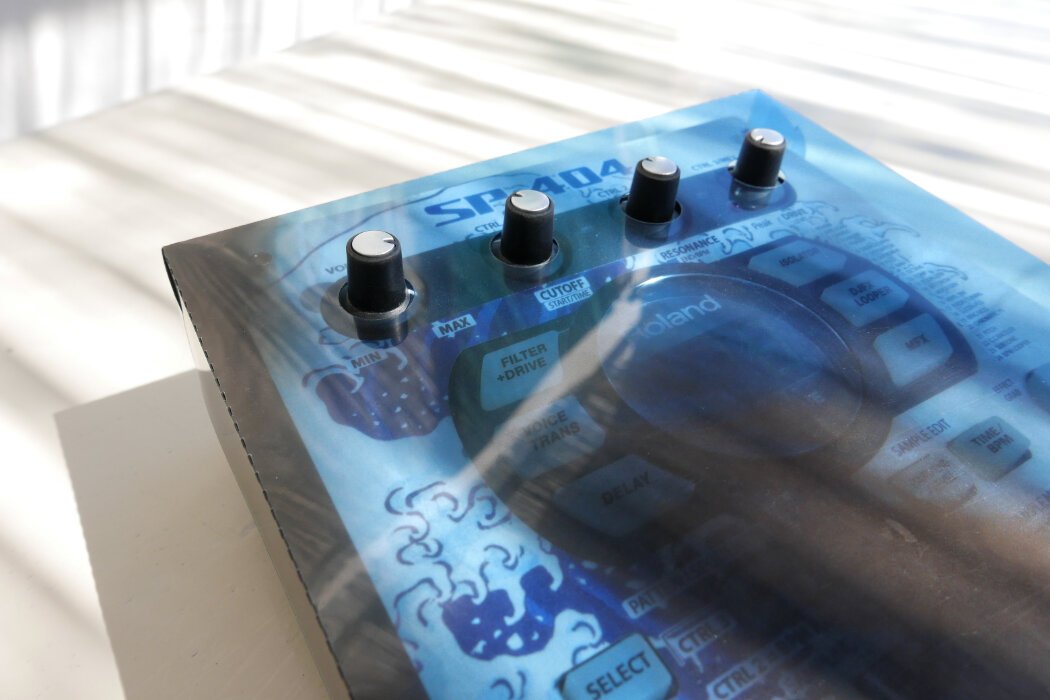
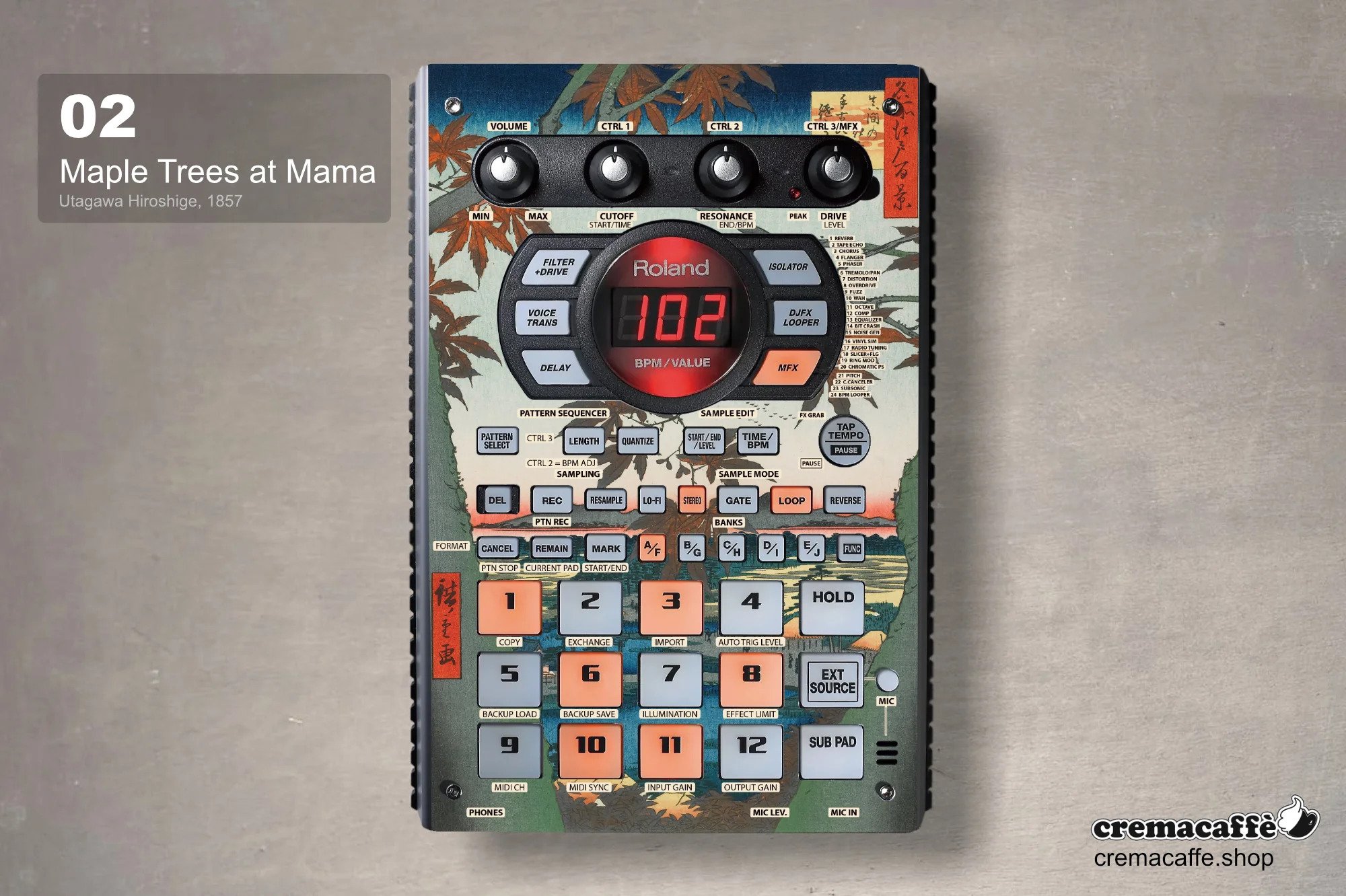
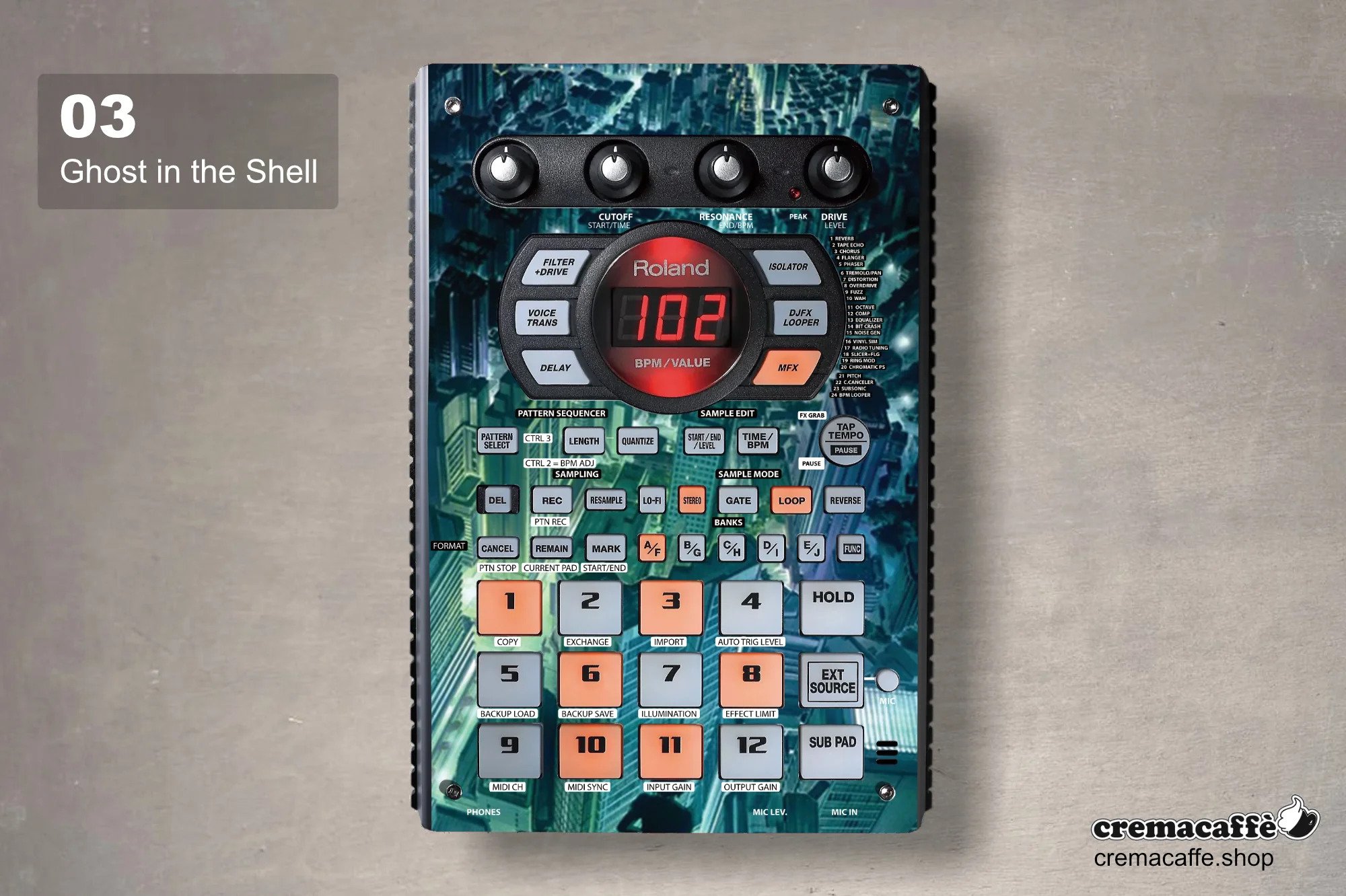
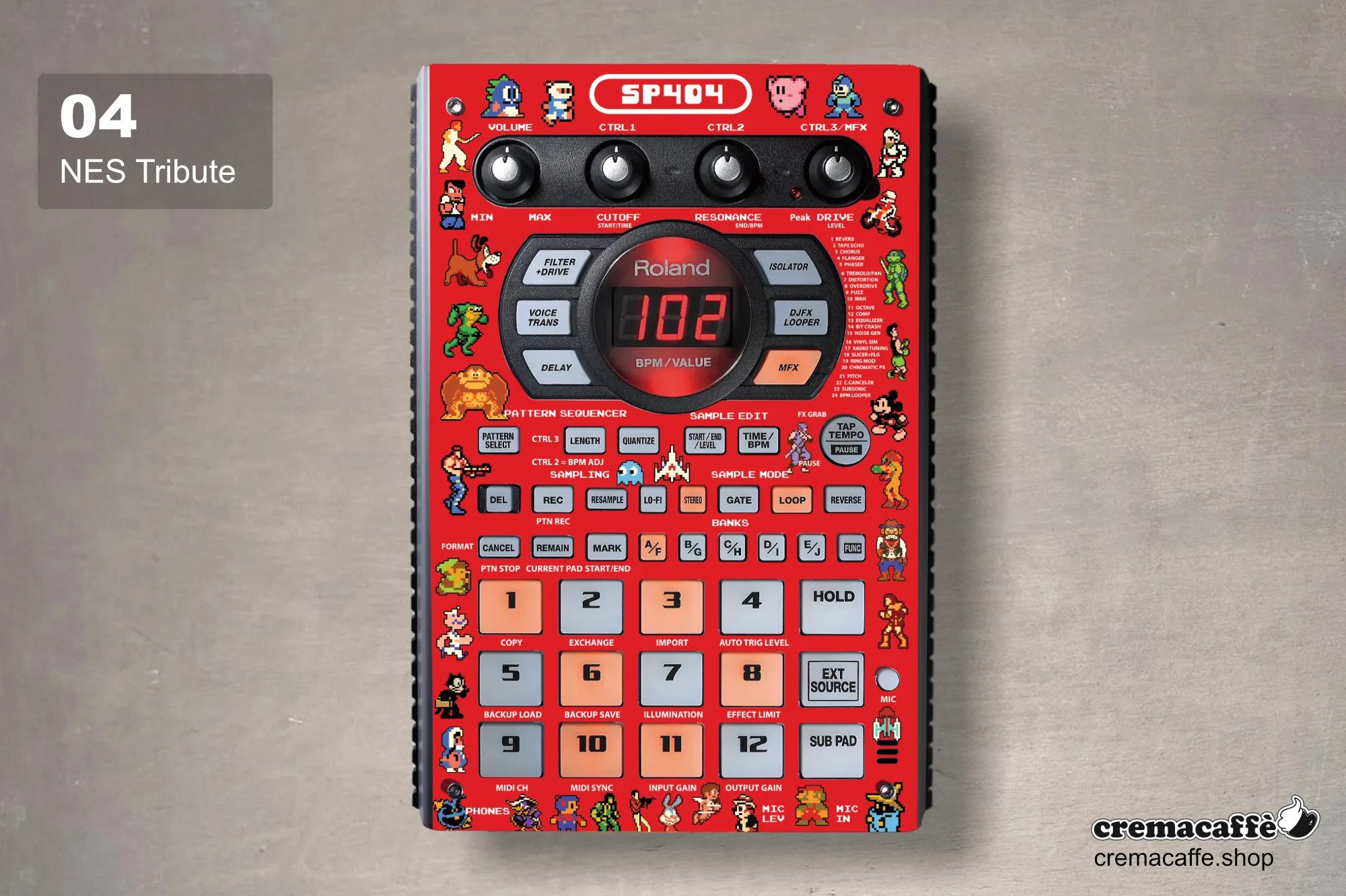
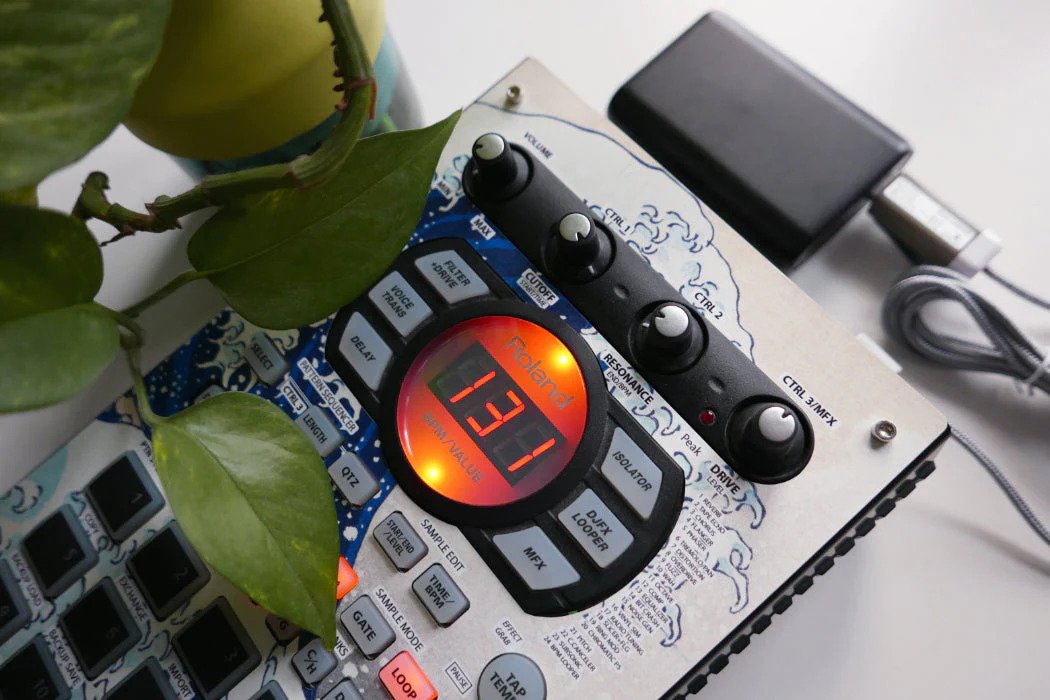
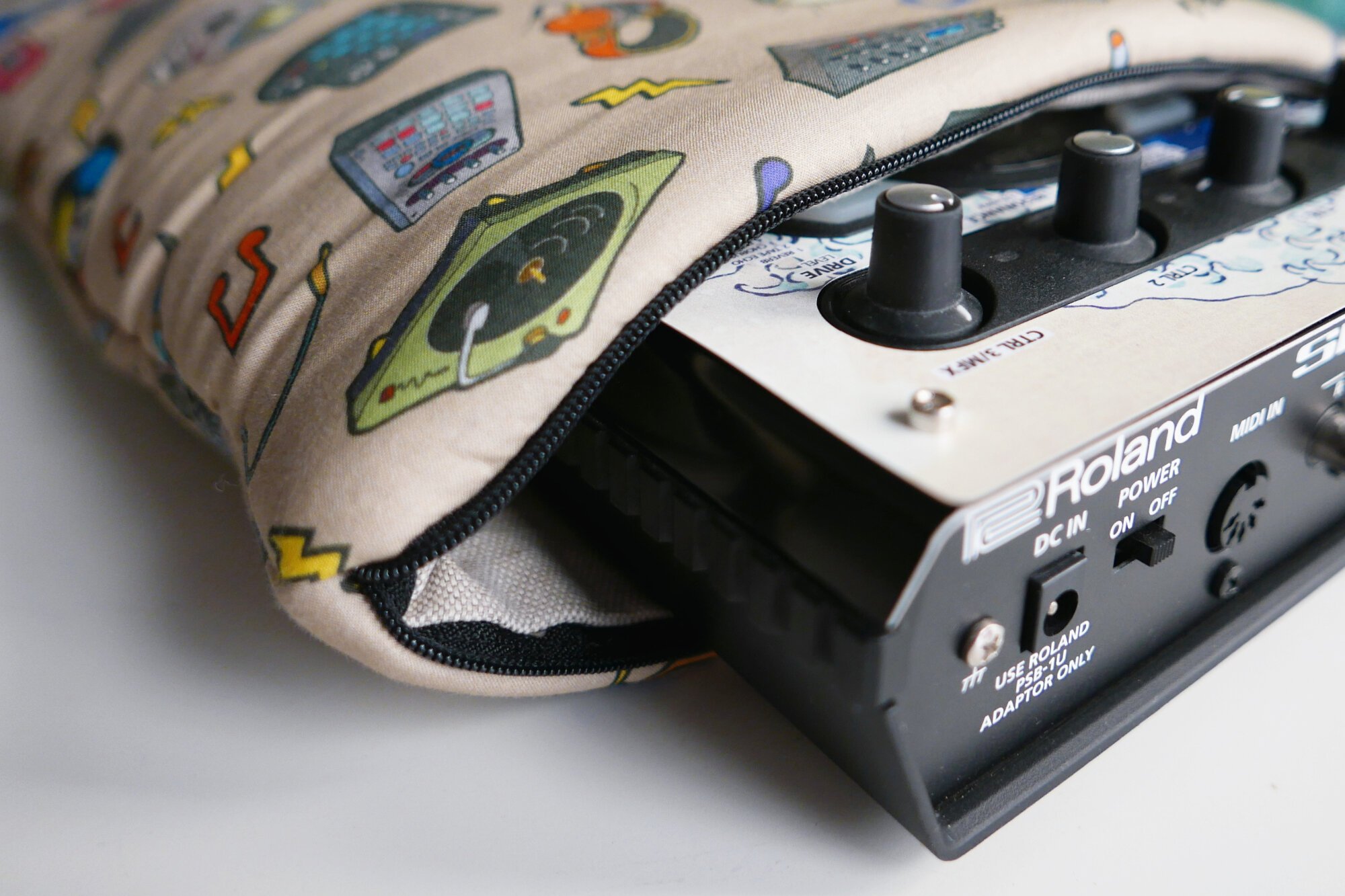
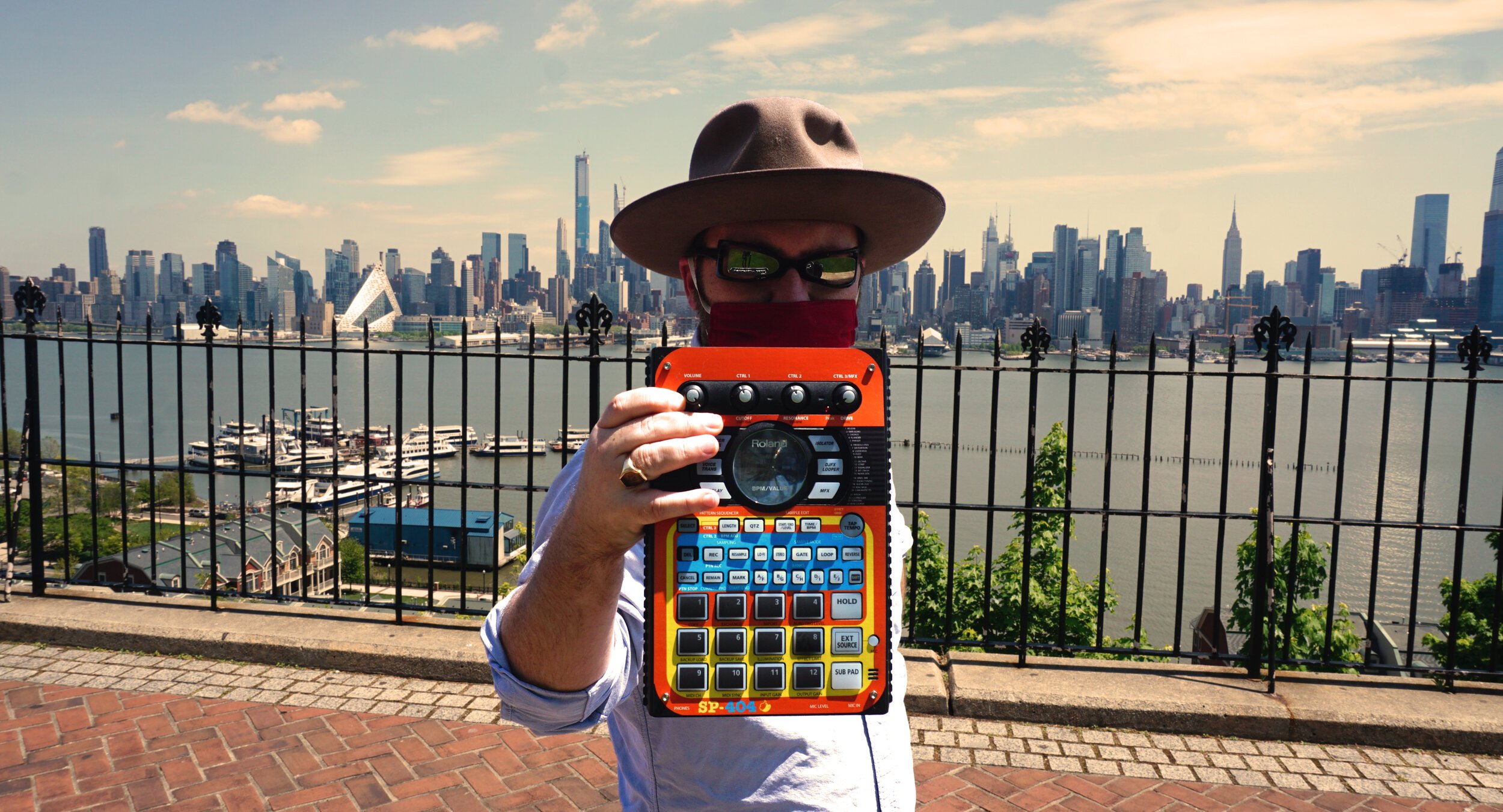
Style Flip
(OG, SX, A, 555)
StyleFlip is one of the most popular sites for SP404 customization and is where you can really make your SP-404 design your own.
The best thing about Style Flip is the design-your-own feature on the website, which lets you print your own image onto a 3M Adhesive vinyl sticker. This might sound difficult to apply to your SP404, but actually it’s pretty easy.
The Style Flip custom vinyl sticker is available for the OG, SX, and A models.
StyleFlip’s design-your-own feature on their website. credit: StyleFlip
MPCStuff
(OG, SX, A)
MPCStuff is one of the original sites for all of your sampler customization needs. It does pretty much every sampler you can think of there - plus spare parts, stands and carry cases for your sampler.
Specifically for the SP samplers: here you can pick up SX, A and OG blank faceplates, as well as replacement pads, knobs, and lots more.
SHOP HERE:
Permanent Lab
Independent store based in Japan. They’ve got a really clean look and stock unique SP-404SX/404-A faceplate stickers for a reasonable price.
Features 4 ‘simple’ colors, 4 ‘baby’ colors, and some dope silver/gold/black knobs that I haven’t seen anywhere else.
*UPDATE* have reached out to the store to confirm if they deliver to customers outside of Japan. Will update you here when I get an answer!
SHOP HERE:
Ultra3200
(OG, SX, A)
Although this is one of the newer shops in the scene (and cheaper), don’t be fooled into thinking this translates to ‘lower quality’ - because it doesn’t!
Ultra3200 is one of the best providers out there, printing some of the most unique and appealing faceplate stickers. The colorful anime/retro gaming styles are instantly recognizable and stand out confidently in a crowd, with many other different design styles to choose from.
They also have a great selection of hip hop & beat culture-themed stickers too!
Check out their range via their online webstore or their popular Etsy store.
PavelxPowers
PavelxPowers has graced many SP-404s with his bright, clean faceplate sticker designs. Their eBay store makes the process easy, showcasing all the different colours they stock next to each other for comparison.
They don’t just make accessories for the 404 either - Pavel’s xpowersdesign store also provides custom faceplate designs for Boss SP-202, the 404’s older brother, the SP-505, the MPC One + MPC 1000 as well as cases to frame and protect the Teenage Engineering’s ‘PO’ range. Check out their store here.
SHOP HERE:
Want extra accessories and cables for your SP-404?
Check out our SP-404 accessories article here.
State of Flow: An interview with Madaliso
“Finding that state of flow, where everything flows together naturally, is the most important aspect of my creative process.”
What is your creative process?
Finding that state of flow, where everything flows together naturally, is the most important aspect of my creative process. The magic occurs when you're in that state of flow. When I have a significant amount of time to be creative, I set up my OP-1, Yamaha reface keyboard, SP 404, and digital camera to film the process. The sample chopping capabilities and audio processing of the OP-1 make it my ideal sampler of choice, allowing me to swiftly explore and experiment. It becomes my playground for slicing samples, igniting that first burst of creativity.
Your cassette player is a key part of your beat videos, what equipment do you use in your creative process?
When it comes to my creative process, I use a range of tools that help define the distinct sound and vibe of my music. At the centre of it all is my trusty DAW Ableton, which serves as the central hub for creating and producing. In addition, I use instruments like the OP-1 and SP 404 in my setup to add their own distinct flavors and effects to enhance the overall sound of my beats. Not to mention my love for cassette tapes! I have a couple tape recorders that I mostly use for referencing sounds and enjoying that warm, vintage tape feel that I like.
I use plugins and the Roland SP with its wild effects to enhance the texture and depth of my beats. At the core of it all, though, Ableton acts as the basis upon which I create the skeleton of my beats, assuring their structural integrity. Then I use my samplers, both hardware and software, to create additional layers that define the distinct character of my music.
The whole hardware vs. software dispute does not rule my creative process. What actually matters to me is discovering tools and techniques that allow me to immerse myself in that state of flow. Whether it's the tactile feel of the OP-1 or the flexibility of software, it's all about facilitating that flow state, when ideas flow and creativity thrives.
How important is the visual element of your work, (beat videos and album art) in conveying your artistic vision?
The visual aspect of my work is extremely important in communicating my artistic vision. Growing up in Rome with roots in Zambia, art has always been a deep passion of mine. Aside from music, I love films, cinema, and various forms of visual art. Recently, I've been diving into the link between pictures and sound, and how they complement each other in today's musical landscape.
I get my inspiration from watching independent African and Asian films, which typically have distinct storytelling and visual styles that speak to me deeply. Afro Surrealism, abstract art, and minimalism have also influenced my artistic outlook.
‘Afro Surrealism Cinima” taken from Aarklight Art
What I've realised is that my artistic vision extends beyond music alone. I strive to connect with people through various creative mediums, making use of the power of visuals to add depth and significance to my work. I am constantly looking for new ways to connect with and inspire others by exploring various artistic channels and challenging myself creatively. Art genuinely flows through my blood, and I am dedicated to expressing my artistic vision and connecting with people on a fundamental and meaningful level.
How do you handle creative block?
My biggest struggle isn’t really creative block, it’s more so finding a sufficient amount of time to create and enter the flow state. Back in the day though I did have creative blocks but the way I got out of it was to find other ways to channel my creativity. I have a real need to be creative, it’s what keeps me grounded.
What’s an album recently which has changed the way you think about music?
"Supreme Clientele" by Ghosteface Killah is one album that recently has had a significant impact on me and reshaped the way I think about music. I wouldn’t say it’s changed the way I think about music, but it’s had a massive impact for sure. I first heard it in December of last year, and it was a life-changing moment for me. I clearly recall being in Zambia, traveling through the stunning landscapes on my way to the Victoria Falls with my family while immersed in the album. The production, mixing and raps - my cup of tea, for real.
In addition to "Supreme Clientele," two more albums have lately been on regular rotation for me. "Off-Piste" by Greg Foat and Art Themen is the first. The second album is "11" by SAULT. This album is a genuine aural voyage, flawlessly combining genres and including thought-provoking lyrics. It has challenged my preconceived conceptions of what music can be and opened my mind to new avenues of creative expression.
What has been the most challenging thing you’ve had to overcome as an artist?
One of the most challenging things I have had to overcome as an artist is letting go of my ego. It was a life-changing experience that offered me mad blessings. By setting my ego aside, I've been able to discover true satisfaction in the creative process, free of the fear of competition. This does not imply remaining in my comfort zone; on the contrary, I am always striving to challenge myself creatively. I’ve been creating music in various forms since I was 11. Along the way I’ve faced a lot of external and internal pressure to "make it" in the industry. However, I've learnt that achieving balance is essential. Balancing progress and innovation while being faithful to my creative vision helps me to achieve fulfillment and delight in my work.
I once supported Oddisee in Brighton a few years back and something he said really stuck with me. “you'll know when you perfect your craft, it's not your peers that validate it nor those that you hold in high esteem.”
What's one useful piece of advice you’d share with other artists?
Never stop learning, and aspire to make sure you work towards having a clear creative vision. With that comes embracing and accepting change.
What’s next for you in 2023?
My main focus this year has actually been finishing music. I’ve got a harddrives worth of unreleased beats and raps which I'm currently working towards getting out into the world. Stay tuned. But for real, I'm trying to create and nurture creative connections with other creatives.
I'll be Dropping RIDING VOL II this year, the first single ‘Lusaka Nights’ is out now!
Find Madaliso on
Instagram | Spotify | Apple Music | Youtube | Twitter
Who should we interview next?
~
Leave a comment below
~
Who should we interview next? ~ Leave a comment below ~
Becoming TikTok’s Viral Beatmaker: An Interview with VANO 3000
“I will say that my experiences have humbled me more as an artist and I don’t take anything or anyone for granted. It’s taught me to hold the ones close who accept me for who I am.”
You’re best known for your song ‘Running Away’ which was part of the viral Adult Swim [AS] TikTok trend in 2021. Can you tell us more about how this happened?
I uploaded the track “Running Away” with a video of myself eating a sandwich on a street corner in NYC. I had a special feeling about the song and wrote "Produced by VANO 3000" on the left of the TikTok video so people would know where it originated. The same night I watched [adult swim] (as usual) and thought to myself wow this would sound dope on the channel.
My method of manifestation is, envision, actualize and then create a replica of the idea so that it can exist and then grow into its intended purpose. With that being said, I decided to create my own Adult Swim bump with "Running Away" to a clip that I took of Spiderman walking in the 42nd street subway of NYC. Initially, the sound blew up amongst skateboarders and I thought “wow that’s really cool!” The next day the track exploded and people started getting really creative with their version of Adult Swim commercials.
We first met you when you came through to our London Beat Social. Where do you see the future of live music going and what do you think will define beat culture in the years to come?
I see the future of live music becoming a lot more digital. I describe myself as a virtual artist and have a vision of creating concerts remotely that anyone in the world can take part in. What will define beat culture in the future is pushing the boundaries of so-called genre. Mixing different styles to create new refreshing sounds that will be appreciated among all cultures.
You’ve been integral to the design of the SP-404 MK2. Is it true that you worked alongside Roland to contribute ideas and processes into the hardware?
Yes. During the process of creating the design of the SP-404 MKII, Roland contacted me to ask my input of what I loved best about the previous version (SP-404A). They wanted to know what can be done to improve on its function and design. They reached out to me because they've watched me use the SP-404 in an unconventional way compared to most other producers. I feel that the MKII compliments my style of beat making a lot better due to the changes that were made. Once everything was finalized Roland sent me the very first MKII with a customized face plate and VANO3000.com imprinted on the bottom.
What’s an album recently which has changed the way you think about music?
Donuts by J Dilla has always been an album that I’ve studied (specifically his manipulation of tempo and blending sounds). J Dilla gave me a different outlook on how music production is “supposed” to be done. Another album that I love and have studied intensely is The Love Below by Andre 3000, a lot of people don’t know that he’s an incredibly skilled producer. His style is just super next level and ahead of its time.
From LA to London to Tokyo, you’ve been busy in 2022 exploring the world. What city has inspired you most and where do you want to go next?
I find inspiration in every city that I go to, I make it my mission to learn something wherever I go. Japan elevated my perspective of design, they are very much forward thinkers and it is shown all throughout their country. A very popular fashion magazine in Tokyo (Nylon) reached out to me for collaboration and I’m looking forward to expanding my brand with their vision. I want to go back to Japan.
With the huge success you’ve seen in the last few years, was there any stress or anxiety that came with it? What are some ways that you keep your mind clear and focused?
There definitely has been some challenges along the way personally. I’ve dealt with the loss of friends and people treating me different in general. I will say that my experiences have humbled me more as an artist and I don’t take anything or anyone for granted. It’s taught me to hold the ones close who accept me for who I am. Ironically, beat-making is what keeps my mind clear and focused. The freedom of expression through music gives me all the peace I need.
Alongside making new music, we know you’ve been working on a clothing brand too - tell us all about it!
I’ve been working on a lifestyle and skateboard brand called Sockify that will focus on clothing and skateboard parts. I haven’t released anything yet but I’ve done photo shoots with skateboarders around the world to start creating awareness around it. In a sense, this is my way of thanking the amazing skateboard community for always showing love and staying true to their ethos. I don’t think people realize how important skateboarders are to culture in general. They are relentless and always pushing the boundaries, they’re also huge on brand loyalty which is a beautiful thing.
What can we expect from Vano 3000 in 2023?
In 2023 you can expect another VANO 3000 summer anthem, more brand partnerships + live shows and of course, new music!















